About our Guide
This guide presents and describes the following:
- Overall bibliographic attributes to determine James Bond first editions
- Attributes specific to certain James Bond novels that determine condition and price
- How conditions influence prices
The guide is organized with an overall commentary about how conditions influence prices, which is followed by sections for each of the 14 James Bond novels that cover all three points above.
Investing in Rare Books
For general information about investing and collecting rare books, please refer to our other guide “Invest in Rare Books”. This guide only covers conditions and prices specific to the Ian Fleming / James Bond first editions.
Overall Commentary About Prices
Generally speaking, one may assume that price increases for books, or dust jackets, follow a straight line as one considers them in ‘good’ condition, ‘very good’ condition’ and ‘near fine’ condition. However, that assumption rarely holds true for James Bond titles. It is often challenging to locate ‘very good’ or ‘near fine’ examples of James Bond / Ian Fleming novels due to condition qualities that are specific to certain titles and make them increasingly scarce. In fact, some condition qualities are so scarce, that the pricing appears more exponential than straight line for seemingly ‘small’ improvements in condition (such as flame definition on the dust jacket of a Moonraker spine).
A simple analogy to collecting Bordeaux wines may be helpful. Ian Fleming’s James Bond first editions, like Bordeaux Grand Crus, are rare collectibles. One can purchase a good quality Bordeaux from an average vintage for $100. For $200, one will find a slightly better quality Bordeaux (maybe from a better vineyard or vintage). Then for relatively small improvements in quality, the price of a Bordeaux jumps to $1,000 or $2,000, but the quality is not 100 times better. It is the specific qualities that make a $1,000 Bordeaux exponentially more expensive than a $100 Bordeaux. This pricing trend applies to other rare collectibles as well, including comics and coins. To build a ‘very good’ or ‘near fine’ collection of James Bond first editions, one needs to be prepared to invest substantially more.
Ian Fleming’s James Bond Series
Ian Fleming’s suspenseful series of 14 novels about the British fictional spy James Bond (known by his code 007), beginning with Casino Royale in 1953 and ending (upon Fleming’s death) with Octopussy in 1964. Fleming’s work for the British Naval Intelligence provided the background for his spy novels.
In 1953, as a relatively unknown author, many of those books upon publication (in addition to his second book, Live And Let Die) were sent to the libraries. Fleming’s Bond series developed success in print, and later in film and quickly became a phenomena that still today is an institution with regular film releases and secondary authors filling the Bond void after Fleming’s death.
The name of James Bond was conjured when Fleming attempted to pick the most average/mundane name he could think of. James Bond was someone Fleming knew and later became his pseudo name for this secret agent.
During Fleming’s lifetime he wrote the following Jame Bond titles. Clicking directly onto each title will bring you to that titles description.
Casino Royale, published 1953, print run of about 4500 copies
Live And Let Die, published 1954, print run of 7500 copies
Moonraker, published 1955, print run of 9900 copies
Diamonds are Forever, published 1956, print run of 14,700
From Russia with Love, published 1957, print run of 15,000
Dr. No, published 1958, print run of 20,000
Goldfinger, published 1959, print run of 24,000
For Your Eyes Only, published 1960, print run of 21,700
Thunderball, published 1961, print run of 50,000
The Spy Who Loved Me, published 1962, print run of 30,000
On Her Majesty’s Secret Service, published 1963, print run of 45,000
You Only Live Twice, published 1964, print run of 56,000
The Man With The Golden Gun, published 1965, print run of 82,000
Octopussy (published after his death in 1966), print run of 50,000
Each book has different salient points for the collector, please see the individual collecting traits below:
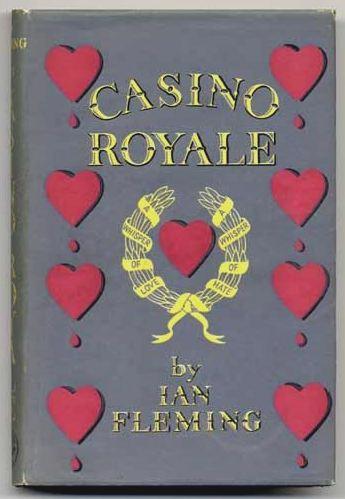
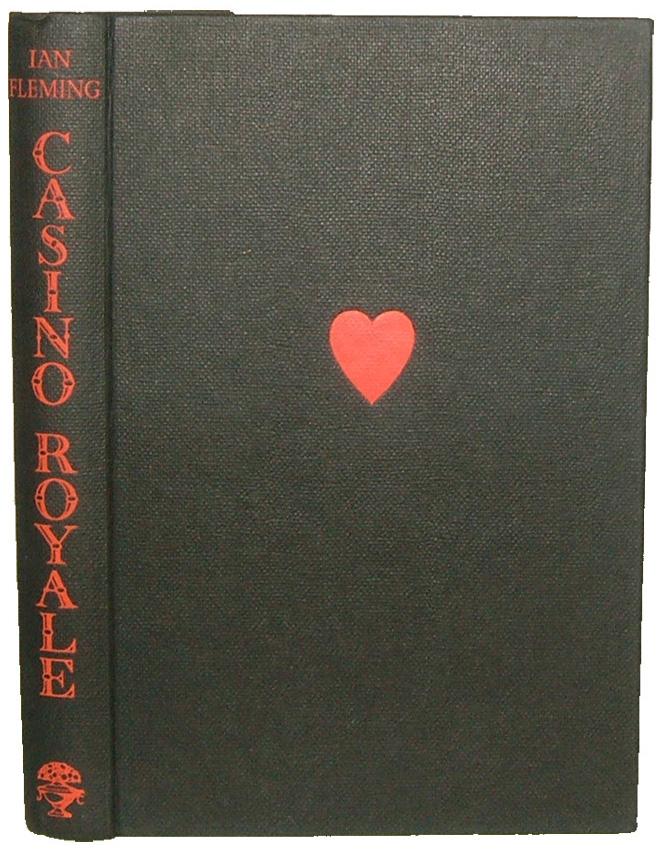
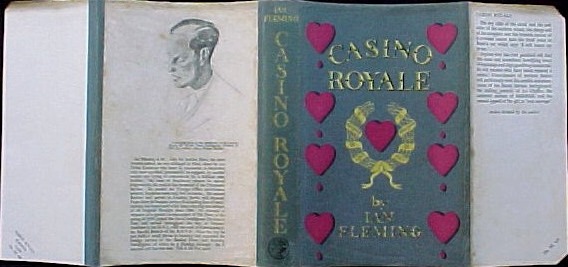
CASINO ROYALE (1953)
DISTINGUISHING FEATURES OF THE FIRST EDITION:
Publication Date: 1953
Publisher: Jonathan Cape, London
Print Run: 4500 copies
The book: Black cloth with red heart to front and red titles to spine. The copyright page should state: First published in 1953. No other editions mentioned. Plain white end papers.
The dust jacket: Artist Kenneth Lewis. Matte jacket paper. Grey jacket with red hearts and yellow titles. Front flap has a blurb about the book and jacket devised by author. Blank rear flap (second issue jacket have a Times Review). Rear panel has a drawing of Fleming and text about his life. Prices show on front and rear flaps of 10s 6d net.
POINTS OF COLLECTING INTEREST:
This book was the first of the James Bond titles. As is often the case for new authors, many of the first edition of their books are distributed to libraries. As such, perhaps as many of half of the print run are ex-library books (which are only marginally considered to be collectible)
This book can tend to have dried cloth so the cloth may split, and the red book titles can either fade or rub. Books that have remained jacketless for some time usually have noticeable fading to the red tiles to the spine. Premiums are paid for books with unsplit cloth, bright unfaded titles to the spine and front of the boards, sharp corners and no edgewear.
The dust jacket held up relatively well with only the more typical issues of chipping and damage. The rear white panel is often found quite age toned or stained, with some of the spine colors faded or sunned (darkened). Otherwise, considering this was the earliest of the Fleming titles, this jacket held up remarkably well. However, once again as many of these books went to libraries, the dust jackets are extremely scarce, especially without The Times review.

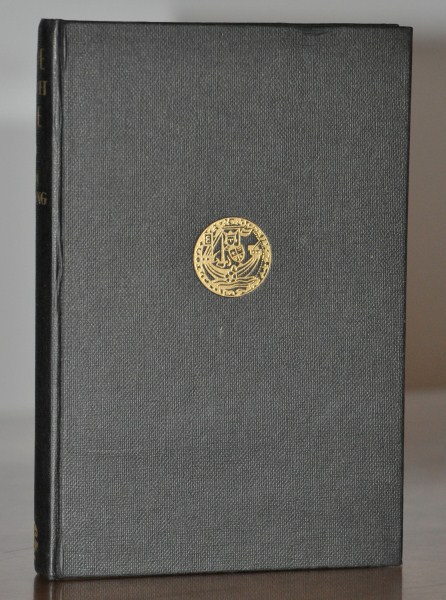
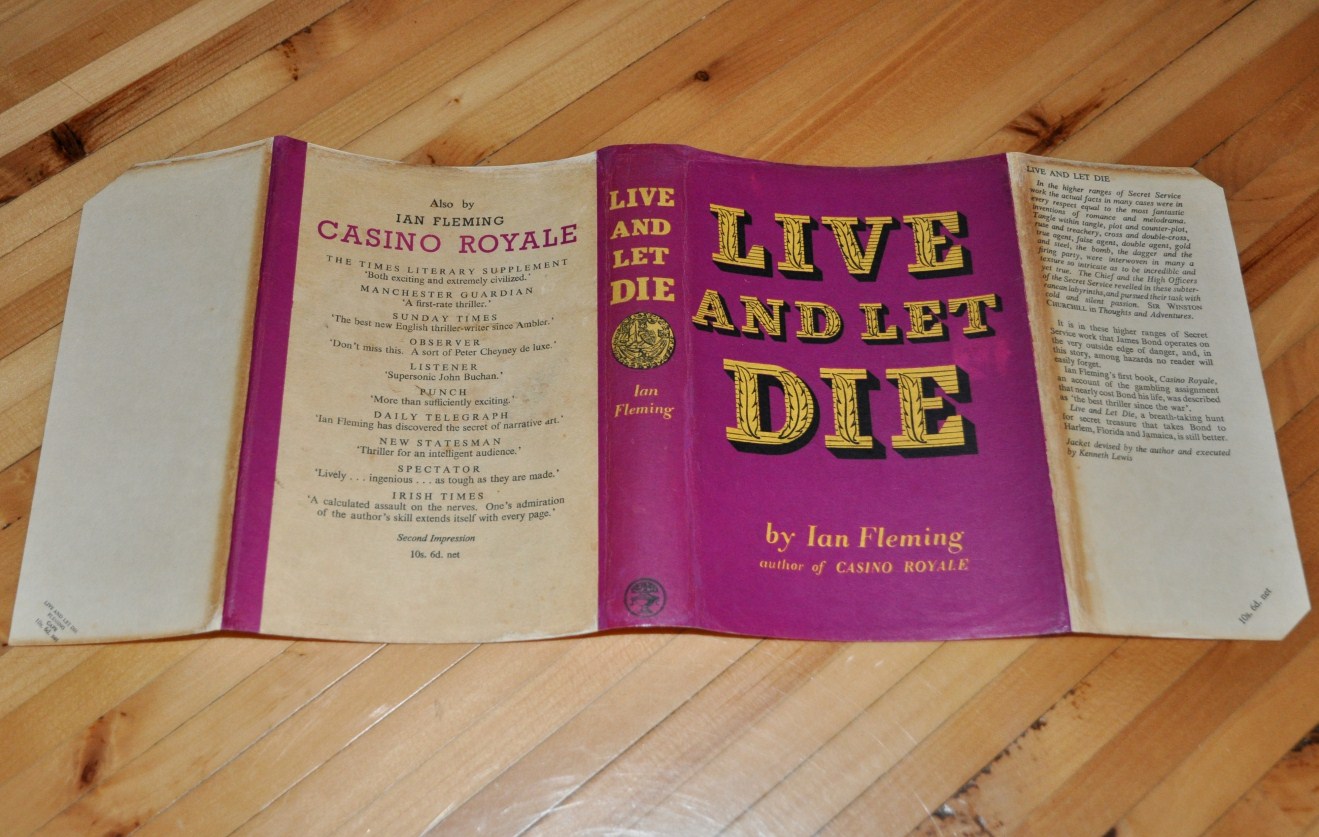
LIVE AND LET DIE (1954)
DISTINGUISHING FEATURES OF THE FIRST EDITION:
Publication Date: 1954
Publisher: Jonathan Cape, London
Print Run: 7500 copies
The Book: Black cloth with a gilt medallion to the front and gilt titles to the spine. The copyright page should state: First published 1954. No other editions mentioned. Plain white end papers
The Dust Jacket: Artist Kenneth Lewis. Matte jacket paper. Hot purple/pink jacket with yellow titles. Rear flap blank. Price 10s 6d. net on jacket flap located to the front and rear flaps. Rear panel has reviews for Casino Royale.
This title may be the most complicated for the investor as this is the only title in which the first edition book was published with 3 versions of the first edition dust jacket. These are referred to as ‘states’ (please see page referring to book collecting for a more complete definition of what a ‘state’ is). All three dust jacket ‘states’ are essentially identical in appearance with the exception of the credit statement for the dust jacket illustrator.
First edition first state: No credit for the dust jacket illustrator is placed on the inside front flap. Very few printings of the first state were published. In fact the first state of the first edition jacket has a smaller print run that Casino Royale and is considered to be more rare.
First edition second state: A credit to the jacket illustrator appears as “Jacket devised by author, and executed by Kenneth Lewis”. And more importantly is located with a space after the text on the front flap, and should appear as almost floating between the text and the empty space on the rest of the flap.
First edition third state: This same credit to the jacket designer appears directly under the text on the front flap with no space.
Examples of the location of the dust jacket credit are shown below.
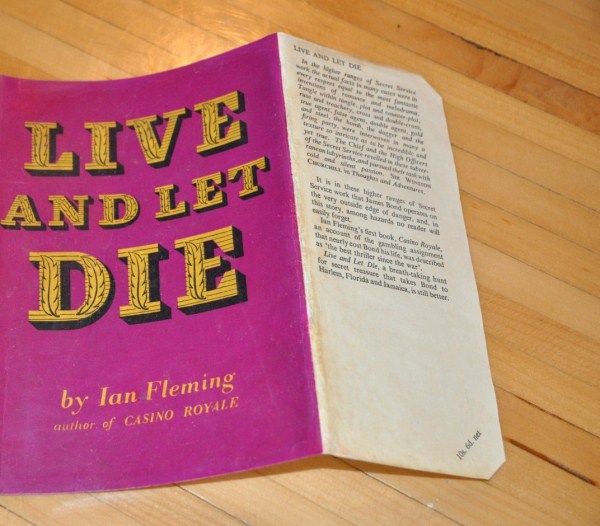
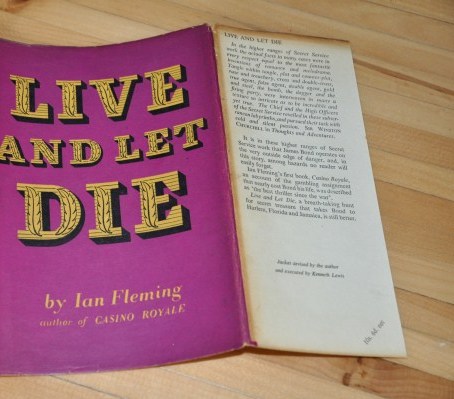
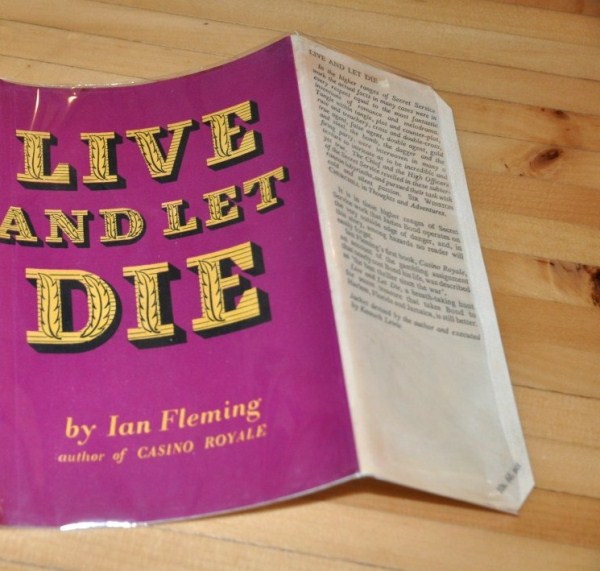
POINTS OF COLLECTING INTEREST:
The print run of the first state of the dust jacket was so small that this jacket is more rare than the jacket for Casino Royale. As such, first editions of this title in first state dust jackets typically start at $19,000 and up (listings currently go to $25,000). The second and third states are more common, with the second state jacket having a slight premium to the third state, (and with all other condition points being equal), one can expect to pay approximately $8,000 for a third state jacket, with a 20% premium for a first edition book in a second state jacket or about $9500-$12,000. The book without a dust jacket can be found at prices ranging from $1000-$1750 based on condition. With that said, one can then conclude the Live And Let Die’s dust jacket value can be assessed at 5 to 10 times the price of the book itself.
The Live And Let Die dust jacket has no substantial collecting issues other than the yellow titles on the spine tend to fade and the white rear panel and flaps tend to become dingy. With all other condition points being equal (such as two sample jackets are otherwise in near fine condition), price premiums are paid for unfaded spines and for bright rear panels.
The book has a tendency towards splitting to the board cloth, in addition to some browning of the page block. Fading to the spine gilt titles and front medallion is common, which can range from very bright and unfaded to quite dulled to an almost brown toned appearance. Premiums are paid for books with unsplit cloth, bright unfaded titles to the spine and front of the boards, sharp corners and no edgewear.
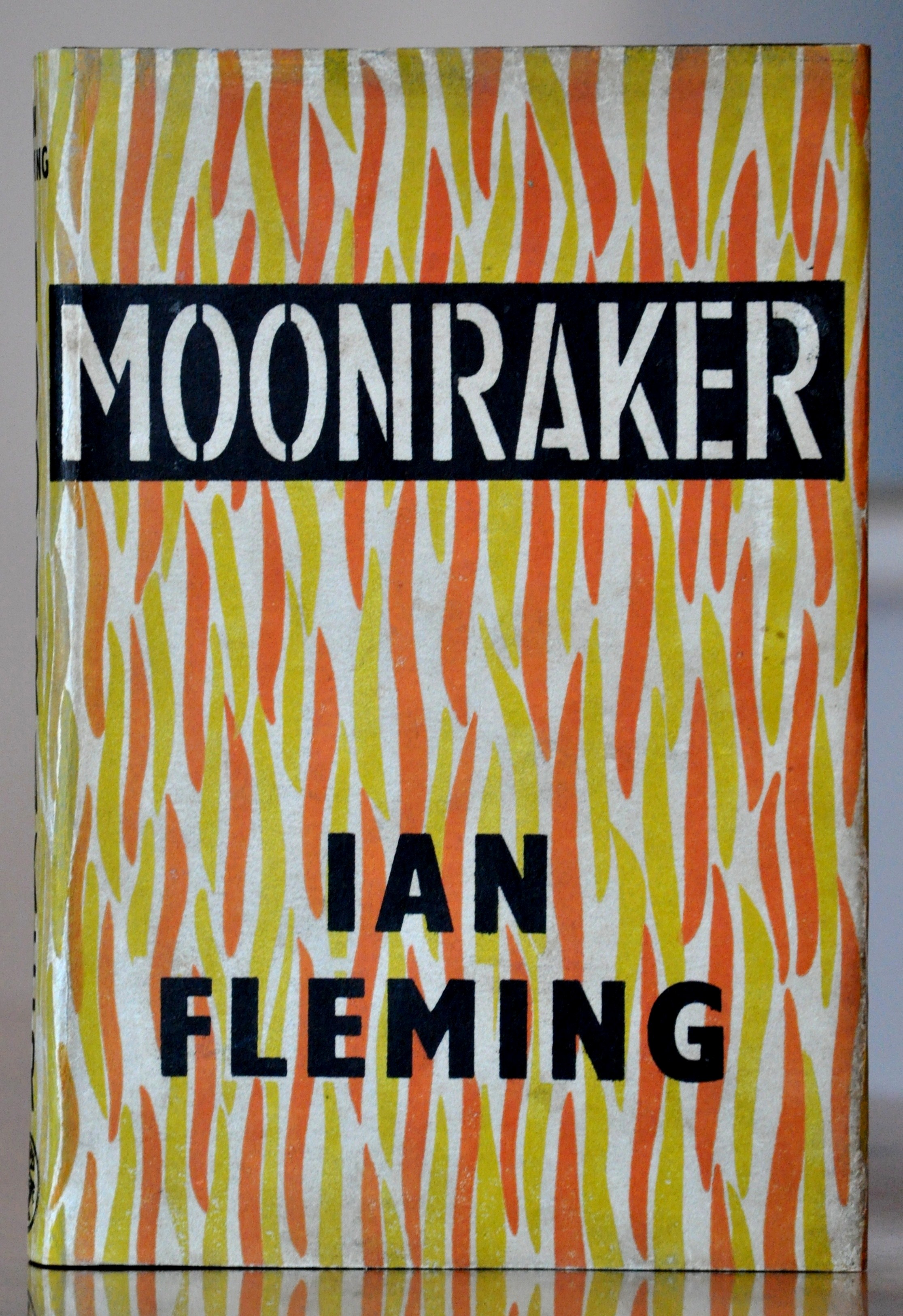
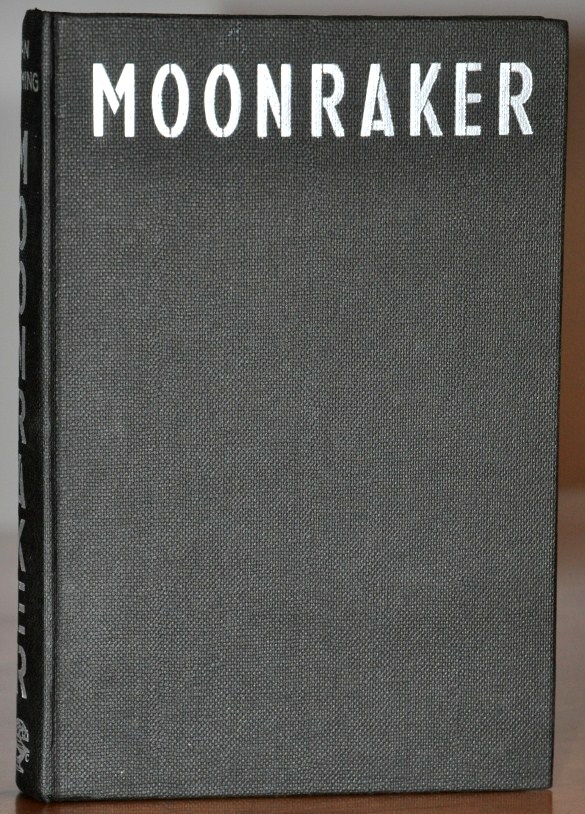
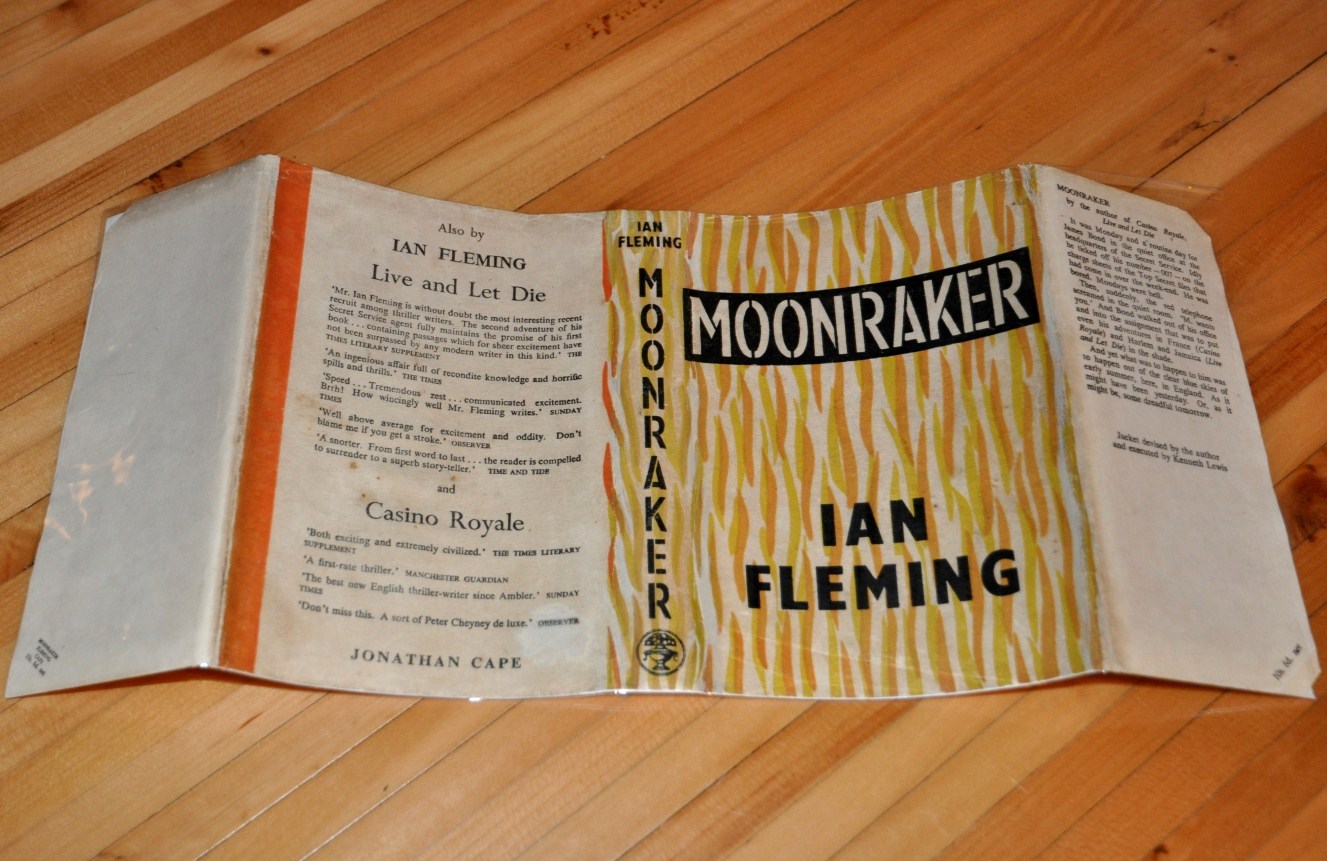
MOONRAKER (1955)
DISTINGUISHING FEATURES OF THE FIRST EDITION:
Publication Date: 1955
Publisher: Jonathan Cape, London
Print Run: 9900 copies
The book: Black cloth with silver titles to front and spine. The copyright page should state: First published in 1955. No other editions mentioned. Page 10 has the word ‘shoot’ spelled either ‘shoo’ or ‘shoot’, priority not fully determined, but the current trend is towards the belief that the original printing had “shoot” incorrectly spelled as “shoo”, and then was corrected later in the print run. Examples with the word ‘shoot’ spelled as ‘shoo’ is today considered a highly scarce first state. Plain white end papers. The book with “shoo” appearing on page 10 can sometimes be printed with slightly thinner paper which tends to bulk up less and browns (age tones) more easily.
The dust jacket: Artist Kenneth Lewis. Matte jacket paper. Flame design jacket. Front flap mentions Casino Royale and Live And Let Die. Blank rear flap. Rear panel has review for Live And Let Die and Casino Royale. Prices shown on front and rear flaps of 10s 6d net.
POINTS OF COLLECTING INTEREST:
This book, can tend to have dried cloth so the cloth may split, and the book titles can either fade or rub. Premiums are paid for books with unsplit cloth, bright unfaded titles to the spine and front of the boards, sharp corners and no edgewear. Most of the books with the correct spelling of the word ‘shoot’, also have the brighter, thicker paper stock.
The Moonraker dust jacket is notorious for the spine to become heavily toned, a process called ‘sunning’, which creates both darkening and fading of the spine flame colors. This can be so extensive that the white parts of the flames may turn brown, and the orange parts completely fade and disappear turning brown as well. The yellow flames tend to fade. As such, all the definition of the spine colors blend together and are no longer distinguishable. The ‘sunning’ problem with this jacket is so common that jackets are almost price graded by the degree of the ‘sunning’. A fresh, bright vibrant jacket without any sunning to the spine is so incredibly rare that it can sell for in excess of $18,000. With all else being equal (no significant chips, edgwear or stains), the price premiums on this jacket are specific to the various degrees of the sunning on the spine. Jackets with very sunned spines in which no flame variations are present can start around $4500, but as soon as any amount of flame visibility is present the price can increase to about $8800, and with overall bright jackets with well defined flames selling for the $11,000 range. And as noted, a premium fresh colored jacket without any of the toning or color fading is so scarce that premiums can command prices in excess of $18,000.
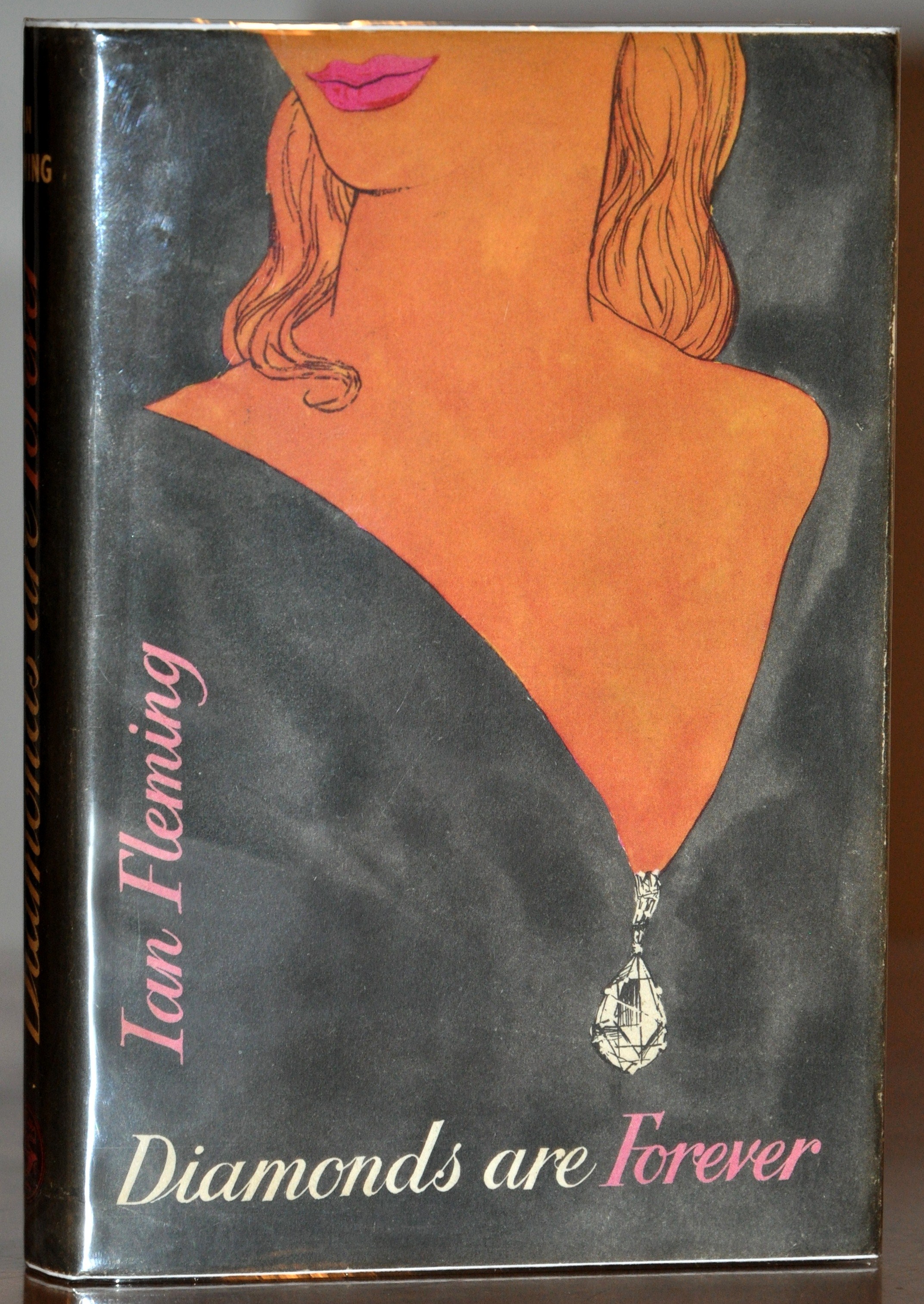
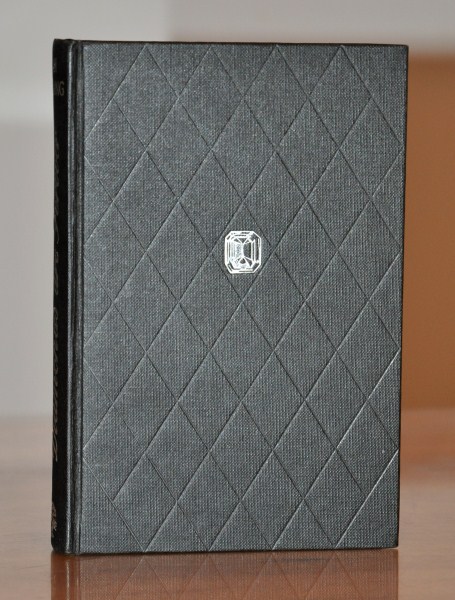
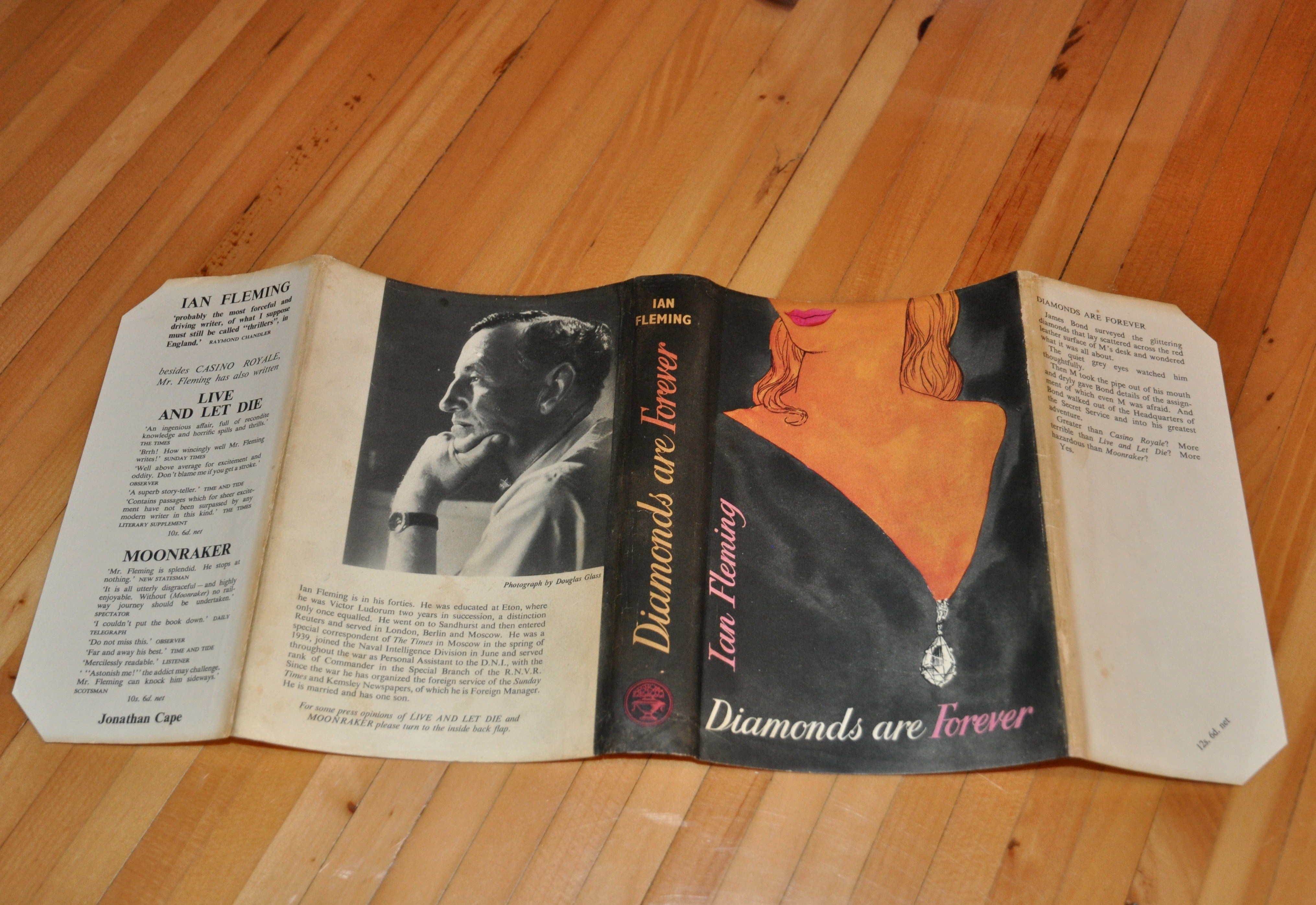
DIAMONDS ARE FOREVER (1956)
DISTINGUISHING FEATURES OF THE FIRST EDITION:
Publication Date: 1956
Publisher: Jonathan Cape, London
Print Run: 14,700 copies
The book: Black ‘cross hatching’ to the cloth with silver diamond emblem to front and silver titles to spine. The copyright page should state: First published 1956. No other editions mentioned. Plain white end papers.
The dust jacket: Artist Pat Marriot. Matte jacket paper. Image of Tiffany Case on the jacket front with a diamonds necklace. Front flap has a blurb about the book. Rear flap has reviews for Live And Let Die and Moonraker. Price on jacket is 12s 6d. net
POINTS OF COLLECTING INTEREST:
This book can tend to have dried cloth so the cloth may split, and the book titles are often found either faded or rubbed. Premiums are paid for books with unsplit cloth, bright unfaded titles to the spine and front of the boards, sharp corners and no edgewear.
The Diamonds Are Forever dust jacket has relatively little condition point for the collector, other than the white spine titles on this dust jacket having a tendency to brown, creating a slightly dingy appearance (sunning), and the fuchsia colors found on the Jonathan Cape logo, and titles can fade. The rear white panel can stain or become dingy. With all other condition points being equal, premiums are paid for jackets with fresh white titles to the spine, bright fuchsia color tones, and clean rear panels.
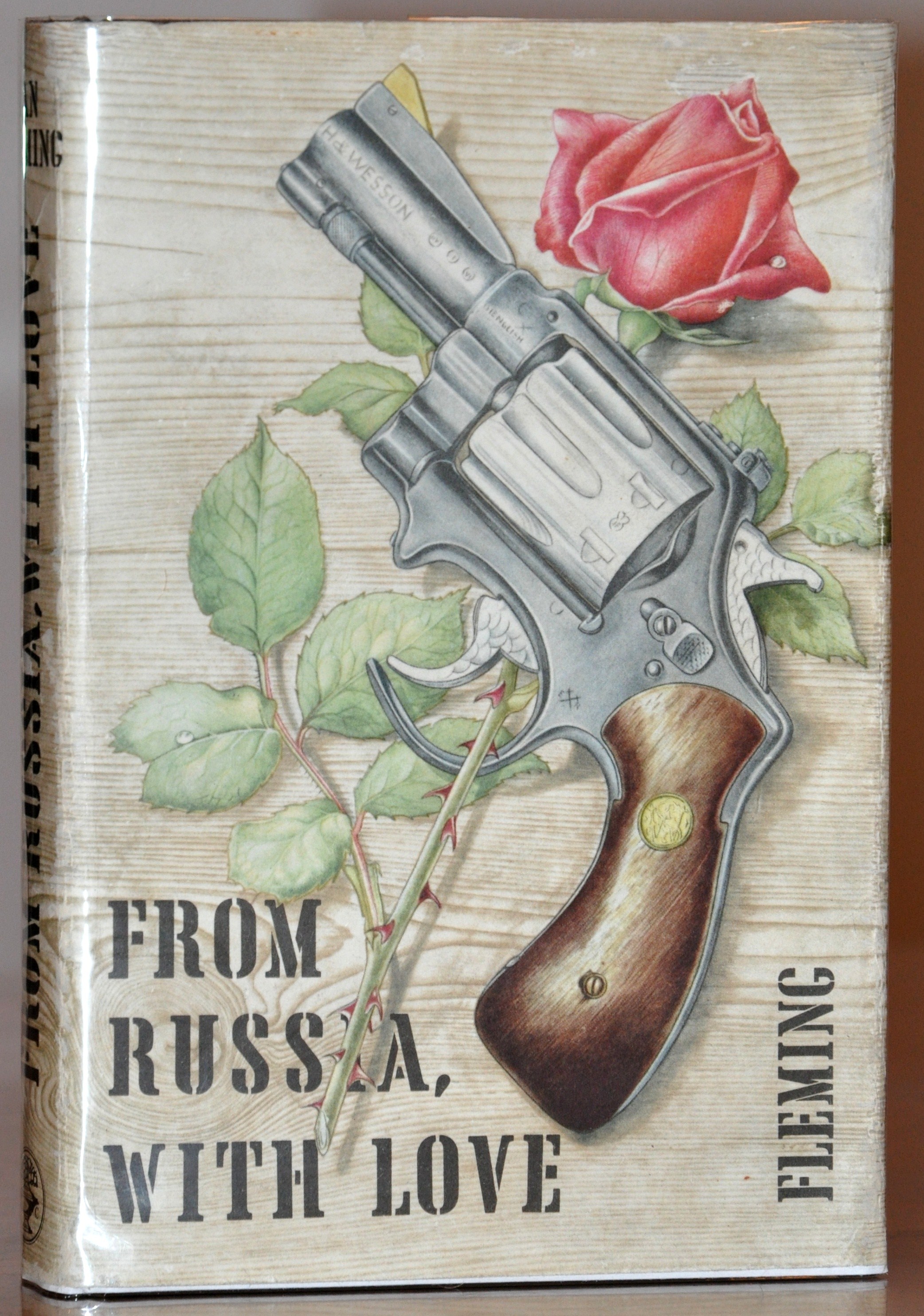
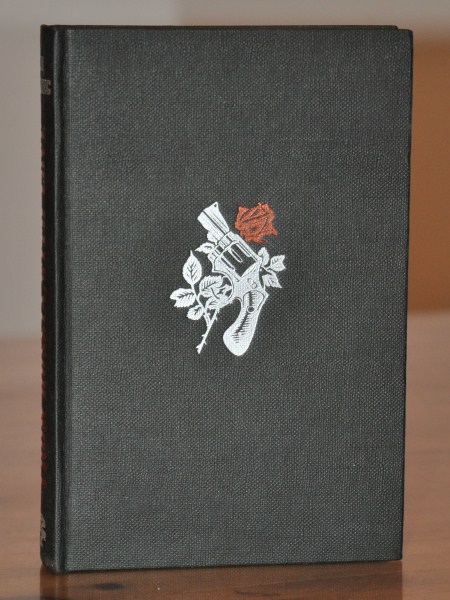
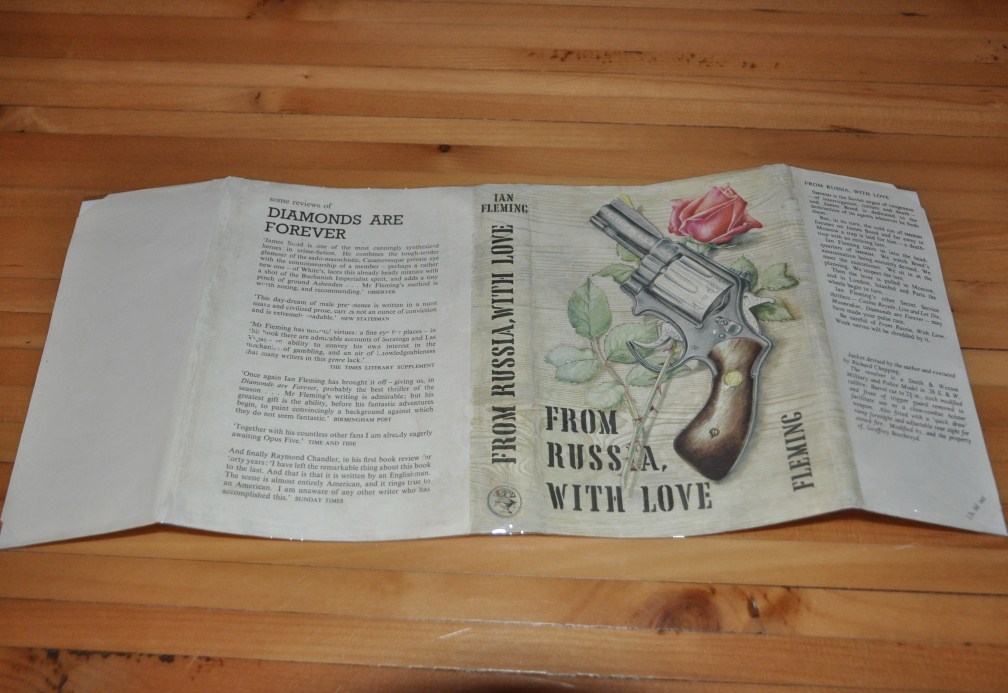
FROM RUSSIA WITH LOVE (1957)
DISTINGUISHING FEATURES OF THE FIRST EDITION:
Publication Date: 1957
Publisher: Jonathan Cape, London
Print Run: 15,000 copies
The book: Black cloth with gun and rose to front and red titles to front and spine. The copyright page should state: First published in 1957 with no other editions stated. White end papers
The dust jacket: Artist Richard Chopping. Matte jacket paper. Gun and Rose to front, blank rear flap. Priced at 13s 6d net. Rear panel has review of Diamonds Are Forever
POINTS OF COLLECTING INTEREST:
From Russia With Love’s print run was not substantially larger than Diamonds Are Forever, however the light colored dust jacket has made this book far more difficult to locate in collectible condition. For this reason, this title in a premium dust jacket will often be found with prices substantially higher than a comparable book and jacket for Diamonds Are Forever
This book, like all the early Flemings can tend to have dried cloth so the cloth may split. In addition the bright red titles on the spine tend to oxidize and turn brown or brownish red. Premiums are paid for books with unsplit cloth, and bright unfaded bright red titles to the spine and front.
The From Russia With Love dust jacket is considered to be the most difficult to locate in collectible condition of all the Fleming titles. This light toned fragile jacket is very prone to severe sunning, browning and brittleness which causes the jacket to tan all over and the spine to darken quite often to the point of turning very brown. This process makes the paper so brittle that it is also very common to find large chunks of the spine completely missing from the jacket (literally breaking off in large chunks). Due to these problems, premium quality jackets are so scarce and can command such a high premium that often the price of a clean, bright “From Russia With Love” dust jacket/book can rival the cost of a “Moonraker” jacket/book, and can certainly surpass the cost of “Diamonds Are Forever” jacket/book. From Russia With Love can be found with poor jackets with sunned spines and large chips for under $1,000, but once the jacket maintains the creamy bright appearance, the From Russia With Love book/jacket can sell for $3,000-$7000, depending on the condition.
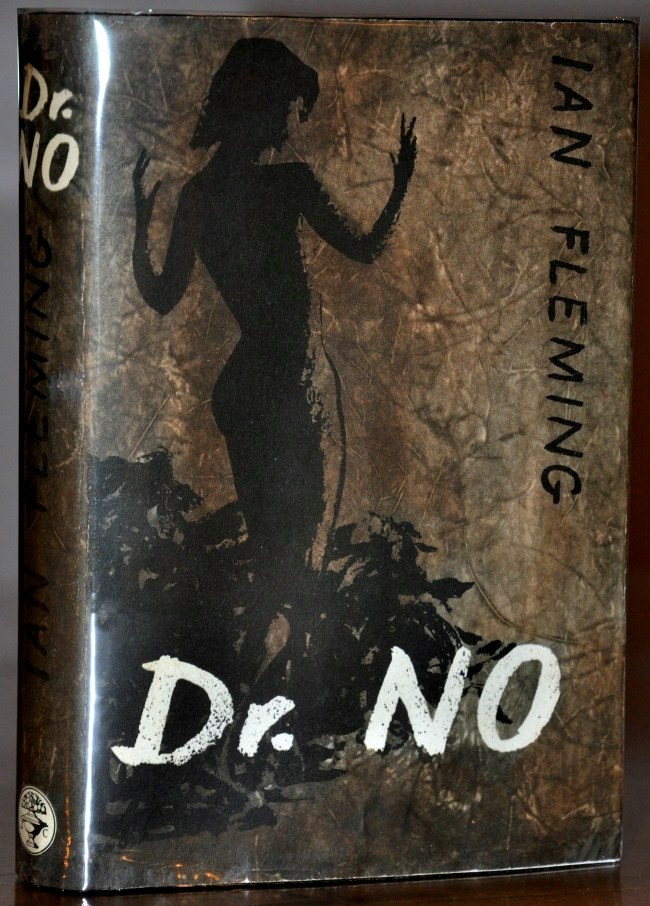
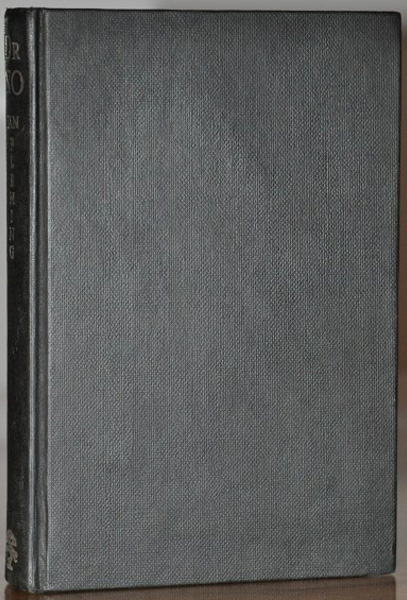
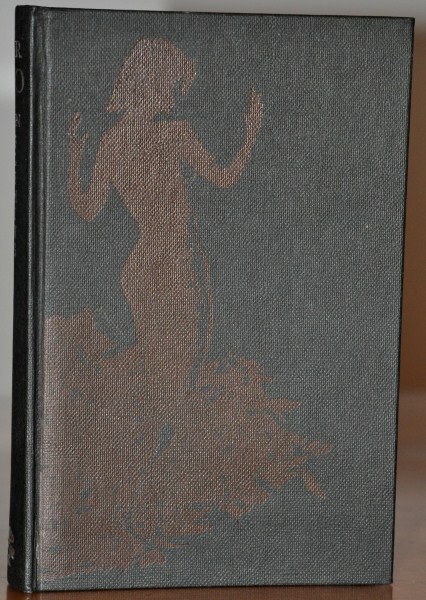
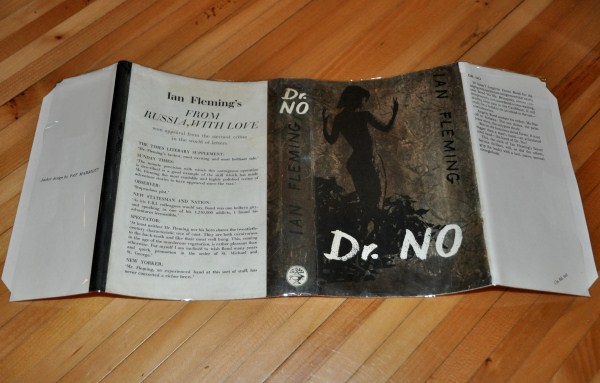
DR. NO (1958)
DISTINGUISHING FEATURES OF THE FIRST EDITION:
Publication Date: 1958
Publisher: Jonathan Cape, London
Print Run: 20,000 copies
The book: Published with two types of boards, one board style is plain black with silver titles to the spine, with the other variation having a silhouette of a dancing woman to the front and silver titles to the spine. No priority is given between the two variations, however it is believed that the variant with the plain black boards are more rare and are the first state. The copyright page should state: First published in 1958 with no other editions stated. White end papers
The jacket: Artist Pat Marriot. Matte jacket paper. The jacket has a shadow image/silhouette of a dancing woman to the front. The rear flap is blank with only a credit statement to the artist. The words “Ian Fleming” on the spine should be black (later printings will have the word “Ian Fleming” in white on the spine). Priced at 13s 6d net.
POINTS OF COLLECTING INTEREST:
The book has a tendency to fox more than the other James Bond / Ian Fleming titles, so premiums are paid if the pages are still clean and without foxing. Premiums are paid for books with unsplit cloth, bright unfaded titles to the spine and front of the boards, sharp corners and no edgewear.
The Dr. No dust jacket also tends to ‘sun’ however with the jacket being mostly dark the effect is far more subtle. The white portions on the spine title (Dr. No), can become dingy or browned, and the overall brown spine tones can somewhat fade to a marginally lighter color. The rear white panel may often become dingy. Premiums are paid if the Dr. No spine titles are still bright white and/or if the brown tones are unfaded. Premiums are also paid for clean, bright rear panels
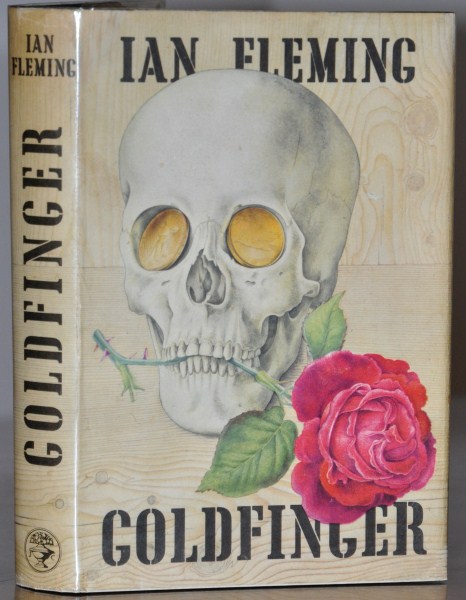
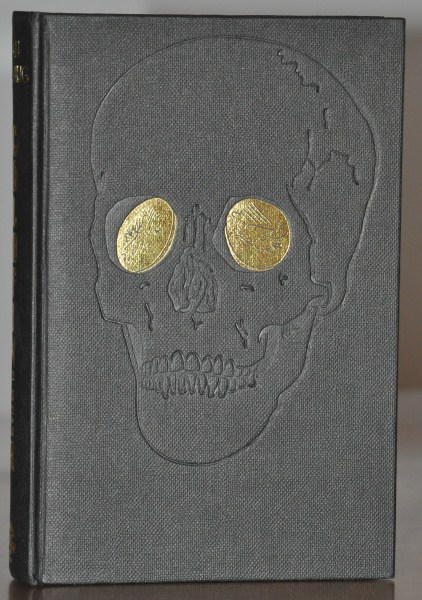
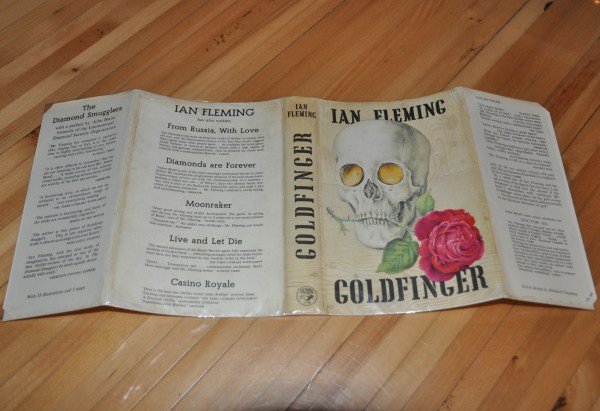
GOLDFINGER (1959)
DISTINGUISHING FEATURES OF THE FIRST EDITION:
Publication Date: 1959
Publisher: Jonathan Cape, London
Print Run: 24,000 copies
The book: Black cloth with embossed skull to front with gilt ‘coin’ eyes, and gilt titles to spine. The copyright page should state: First published in 1959 with no other editions stated. White end papers. This book was issued in a two states. The first state of Goldfinger has an additional very small embossed line along the forehead of the skull, while in the other states that additional mark is not present.
The jacket: Artist Richard Chopping. Matte jacket paper. Skull and rose to front. Front flap has a blurb about book and a Dr. No review. Rear flap has reviews for The Diamond Smugglers. Rear panel has 5 reviews. Price on jacket flap of 15s net.
POINTS OF COLLECTING INTEREST:
This book, like the other Fleming titles can tend to have dried cloth so the cloth may split, and the book titles can either fade or rub. Premiums are also paid for books with unsplit cloth, bright unfaded titles to the spine and front of the boards, sharp corners and no edgewear.
The Goldfinger dust jacket has many of the same issues and concerns that follow the other light toned James Bond dust jackets. Once again, this light toned jacket tends to turn brown, with the spine most affected (sunning). The appearance of the wood ‘grain’ can virtually disappear as the color tones darken and blend in. The rear white panel is often found dingy. Premiums are paid for overall bright, vibrant jackets with bright spines without any darkening or sunning. Paper brittleness and excessive spine chipping seems to be less apparent with this title relative to From Russia With Love. Premiums are also paid for clean and bright rear panels.
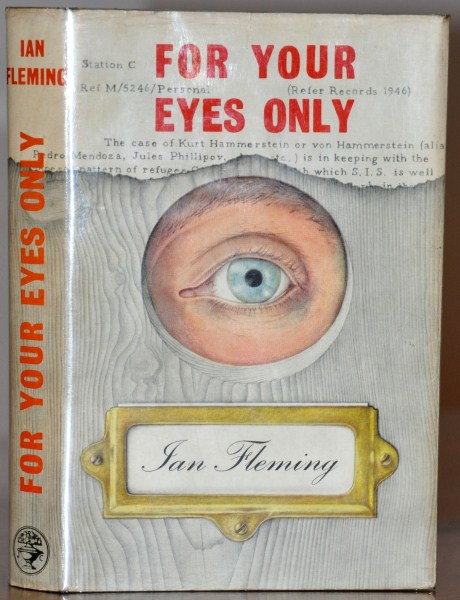
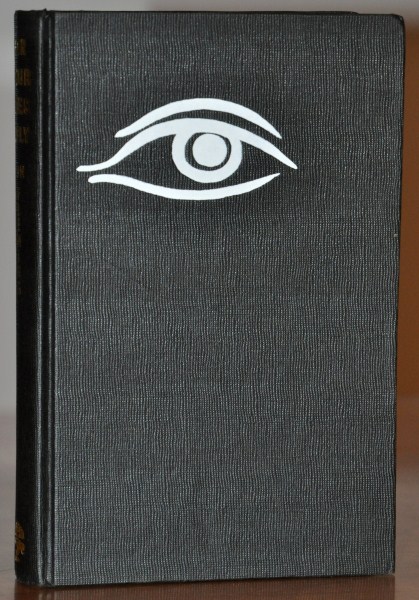
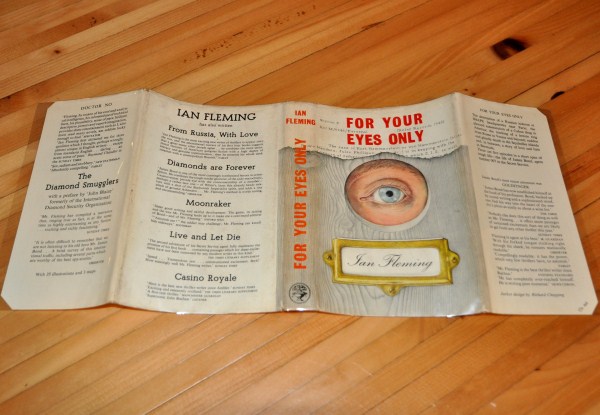
FOR YOUR EYES ONLY (1960)
DISTINGUISHING FEATURES OF THE FIRST EDITION:
Publication Date: 1960
Publisher: Jonathan Cape, London
Print Run: 21,700 copies
The book: Black cloth with white eye to front and gilt titles to spine. The copyright page should state: First published in 1960 with no other editions stated. White end papers
The jacket: Artist Richard Chopping. Clear shiny coated paper (this is the only Ian Fleming/James Bond dust jacket with a shiny coating to the paper as the others are all matte). Design with large eye to front. The front flap has a blurb about the book and a review for Goldfinger. Rear panel has five reviews. The rear flap has a review for The Diamond Smugglers and Dr. No. Price on jacket flap of 15s net.
POINTS OF COLLECTING INTEREST:
Note, the print run of this book was actually about 10% smaller than the print run for Goldfinger.
This book, like the other Fleming titles can tend to have dried cloth so the cloth may split, and the book titles can either fade or rub. Premiums are paid for books with unsplit cloth, bright unfaded titles to the spine and front of the boards, sharp corners and no edgewear.
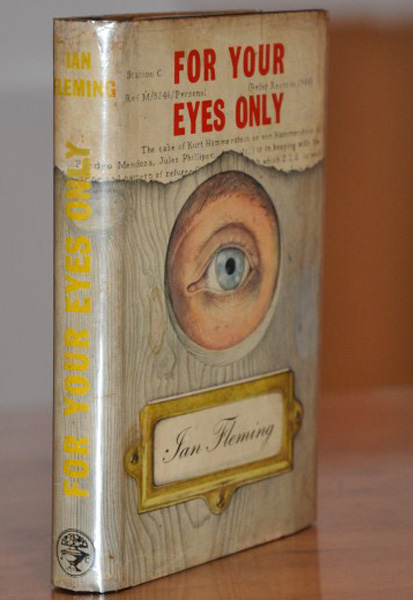
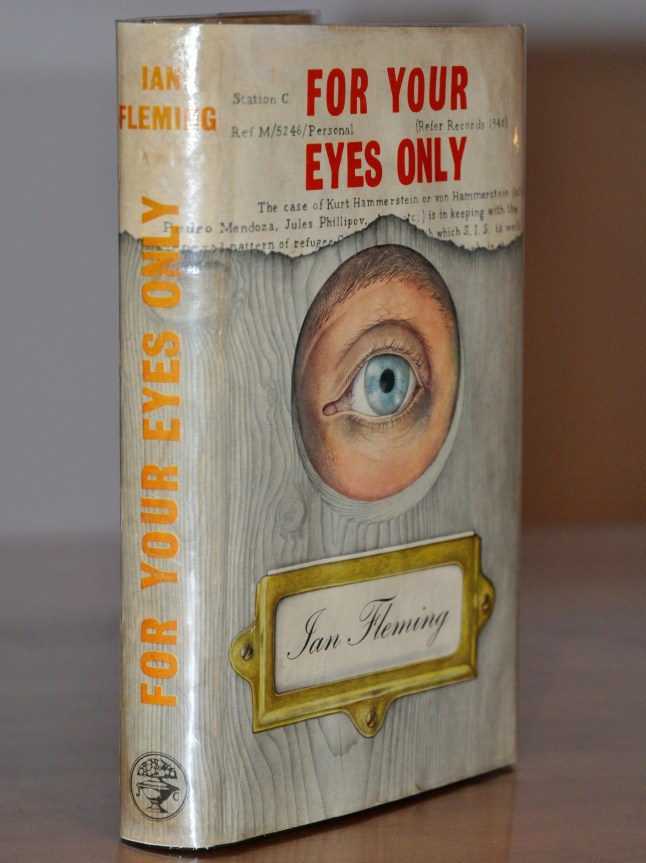
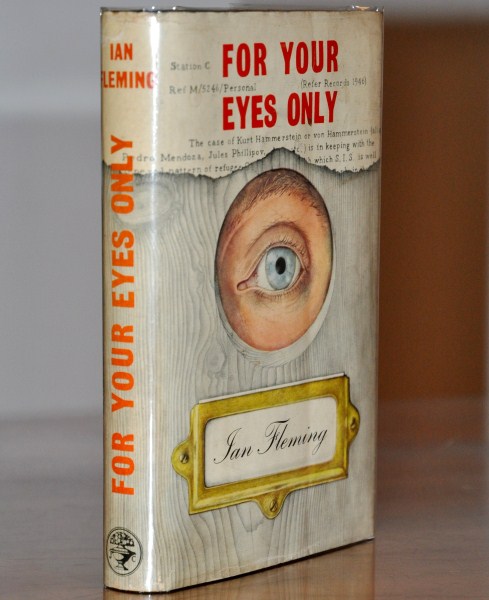
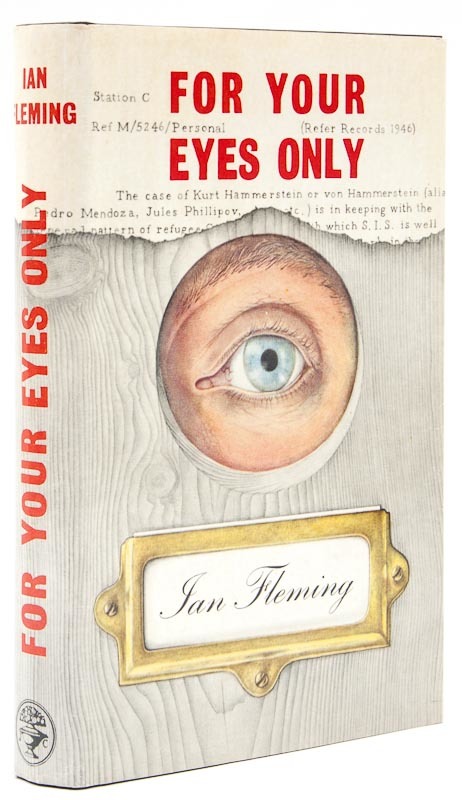
As noted above, this is the only Ian Fleming / James Bond jacket which has a clear shiny coating to the paper. This coating has a tendency to yellow with age. The red spine title is very prone to severe fading and is often found pale orange or even faded to a pale yellow. (Examples of various states of the faded spine titles are shown below). The rear white panel can become dingy, and as mentioned above, the clear coating can yellow slightly. Large premiums are paid for unfaded red spine titles, with smaller premiums paid for clean, bright rear panels. Examples with very faded spines can sell for $550-$600, however (and with all other conditions being equal comparing near fine examples without edgewear, stains or chips), large premiums can be paid for examples with strong red titles to the spine and no yellowing to the coating. Such high quality examples of this dust jacket typically sell for $1200-$3200.
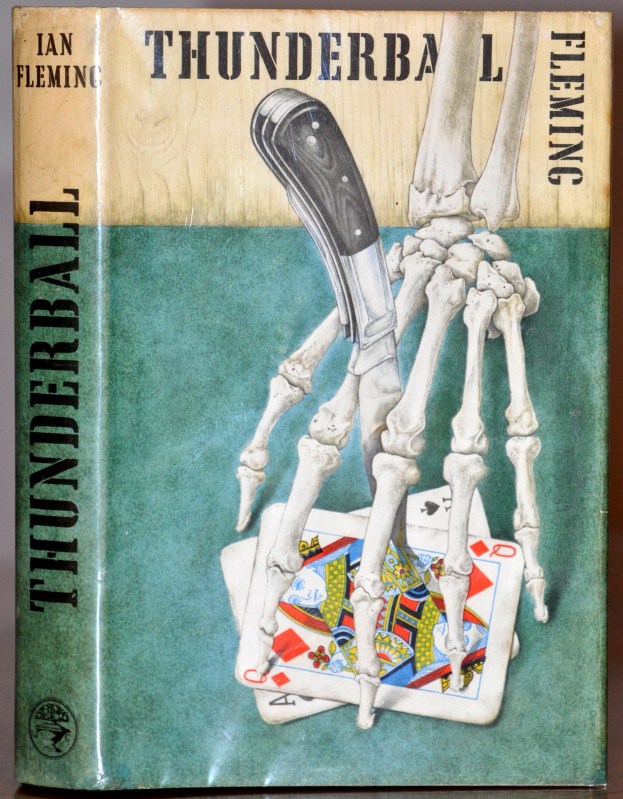
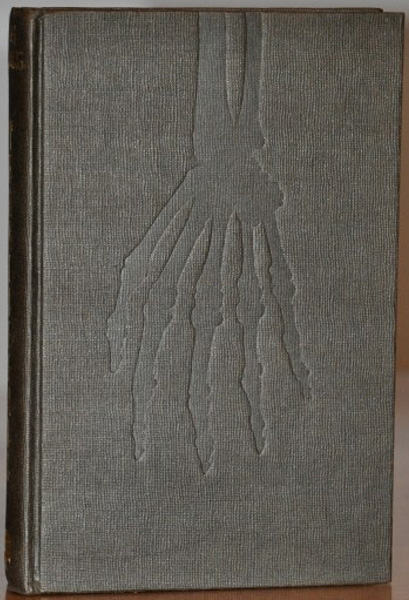
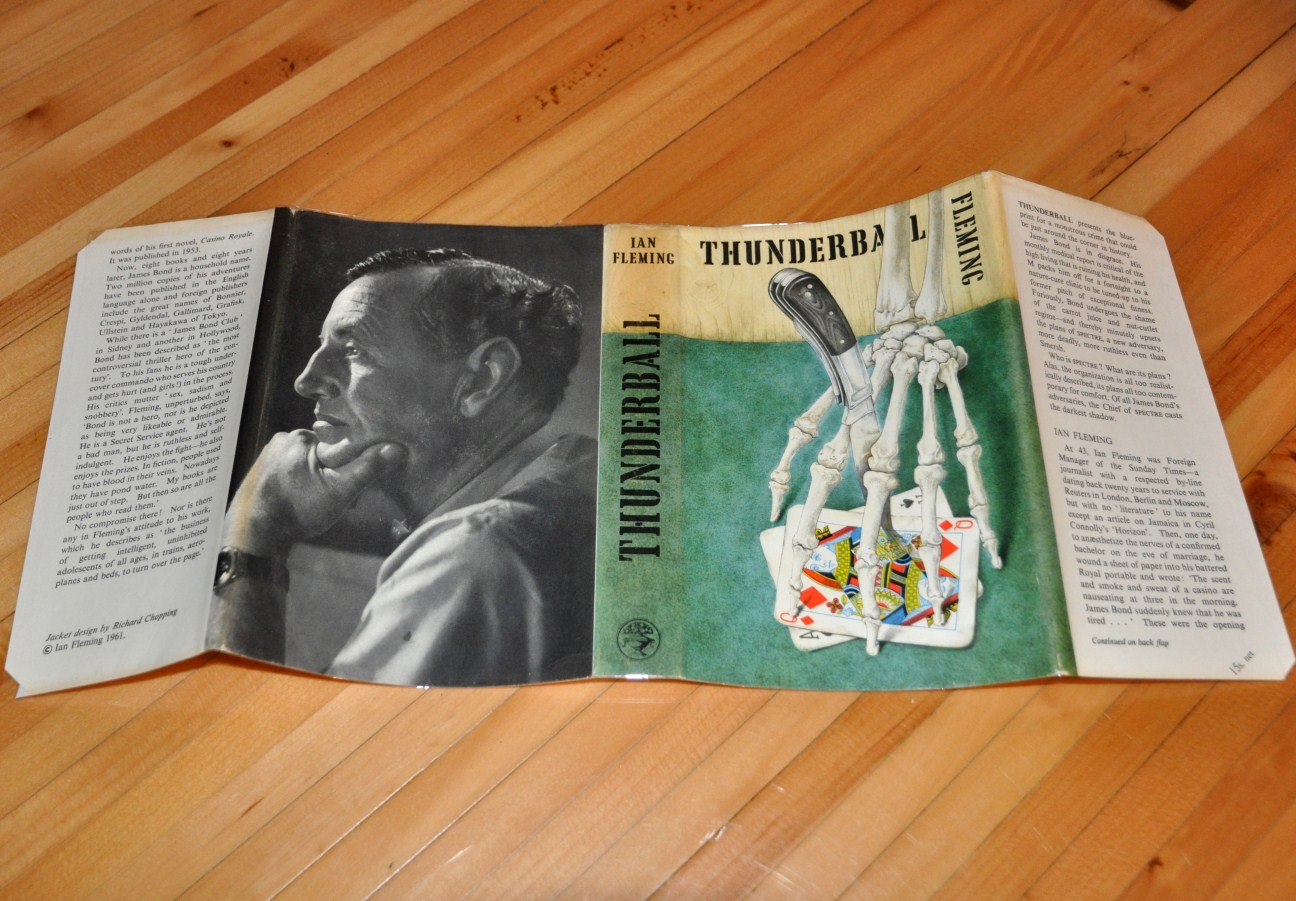
THUNDERBALL (1961)
DISTINGUISHING FEATURES OF THE FIRST EDITION:
Publication Date: 1961
Publisher: Jonathan Cape, London
Print Run: 50,000 copies
The book: Black cloth with embossed skeleton hand to front and gilt titles to spine. The copyright page should state: First published in 1961 with no other editions stated. White end papers
The jacket: Artist Richard Chopping. Matte jacket paper. Skeleton hand and playing cards to front. Front flap has a blurb about book and the author. Rear flap continues the blurb about the author. Rear panel has a photograph of the author. Price on jacket flap of 15s net.
POINTS OF COLLECTING INTEREST:
This book, like the other Fleming titles can tend to have dried cloth so the cloth may split, and the book titles can either fade or rub. Premiums are paid for books with unsplit cloth, bright unfaded titles to the spine and front of the boards, sharp corners and no edgewear.
The Thunderball dust jacket should have bright blue/green tones. This dust jacket tends to have the blue/green tones turn less bright with the blue undertones sometimes completely disappearing leaving more of a dull green. The pale light beige tones to the spine can darken and brown. Premiums are paid for overall bright jackets still maintaining the blue/green tone and with no spine darkening especially to the lighter toned beige areas of the spine.
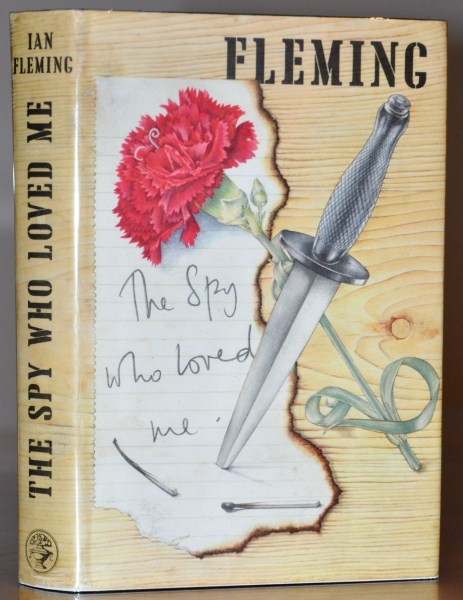
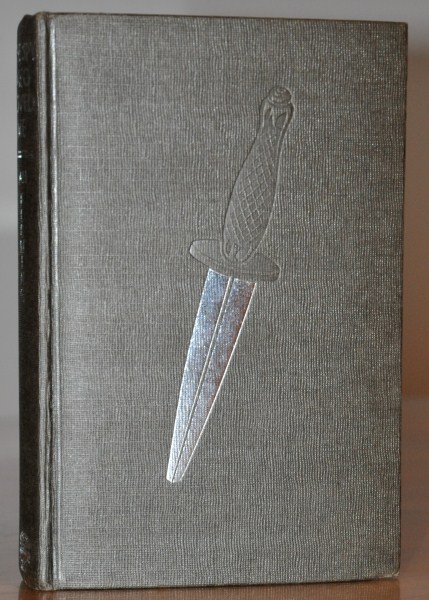
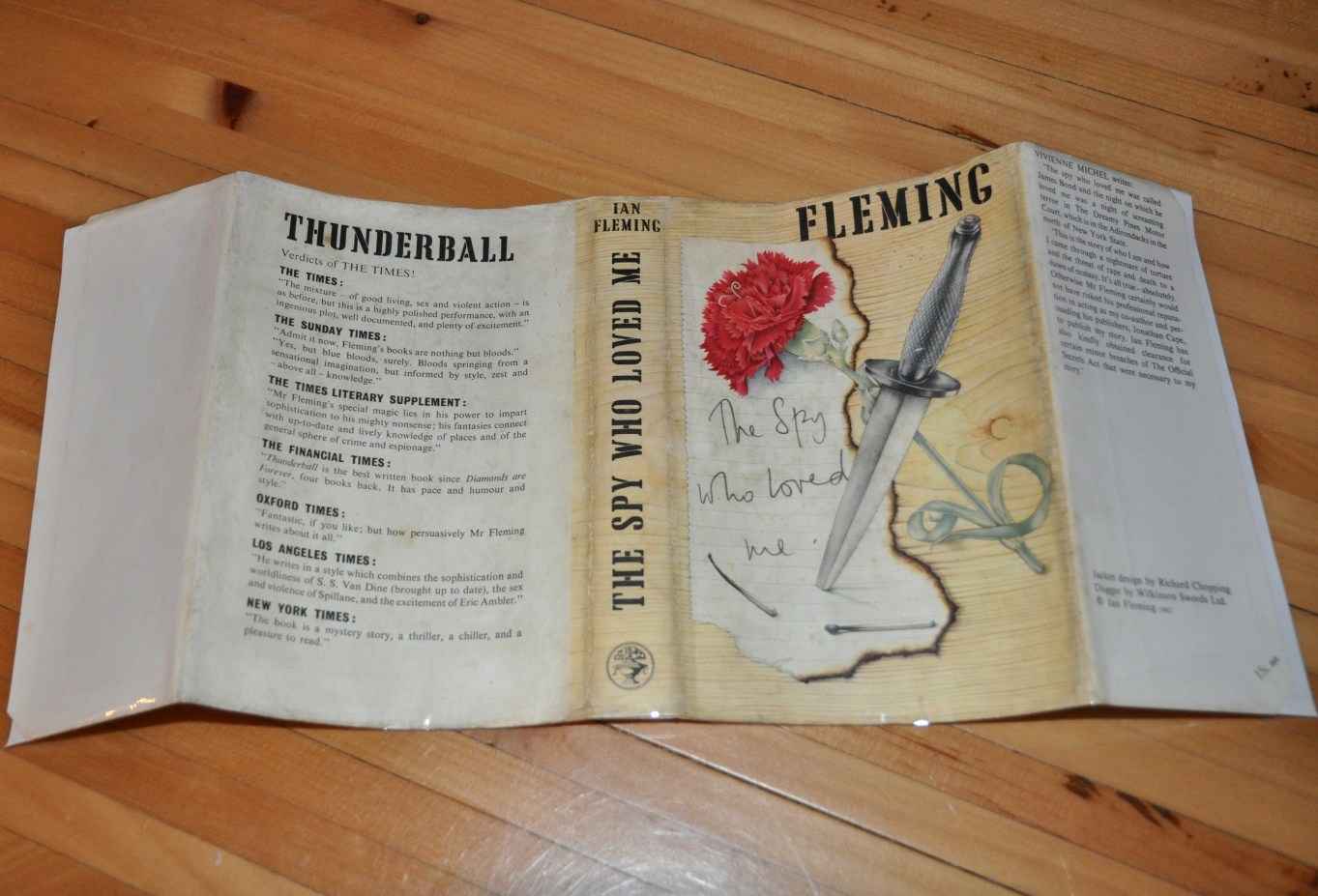
THE SPY WHO LOVED ME (1962)
DISTINGUISHING FEATURES OF THE FIRST EDITION:
Publication Date: 1962
Publisher: Jonathan Cape, London
Print Run: 30,000 copies
The book: Black cloth with silver dagger to front and silver titles to spine. The copyright page should state: First published in 1962 with no other editions stated. Bright solid red end papers
The jacket: Artist Richard Chopping. Matte jacket paper. Silver dagger and rose to front. Front flap has a blurb about Vivienne Michael. Rear flap is blank which is the distinguishing point to determine the first edition status as other later printings had text on the rear flap. Rear panel has review of Thunderball. Price on jacket flap of 15s net.
POINTS OF COLLECTING INTEREST:
Note, the print run of this title is almost 50% smaller than the print run for Thunderball. That combined with the fragile light toned dust jacket are the primary reasons this Ian Fleming title is often found at prices substantially higher than Thunderball, even though Thunderball was printed a year earlier.
This book, like the other Fleming / James Bond titles can tend to have dried cloth so the cloth may split, and the book titles and/or design can either fade or rub. Premiums are paid for books with unsplit cloth, bright unfaded titles to the spine and front of the boards, sharp corners and no edgewear
The light toned jacket tends to turn brown, with the spine most affected (sunning), and the rear white panel often is found dingy. Premiums are paid for overall bright jackets with bright spines without any darkening or sunning. In addition premiums paid for clean and bright rear panels.
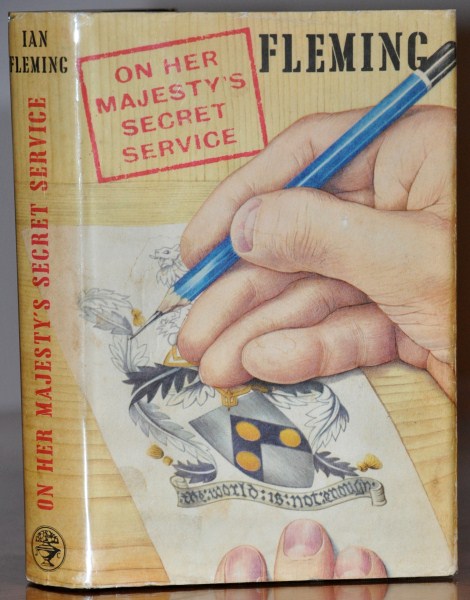
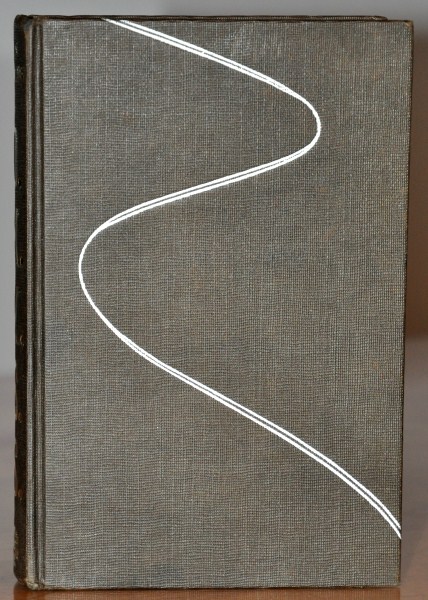
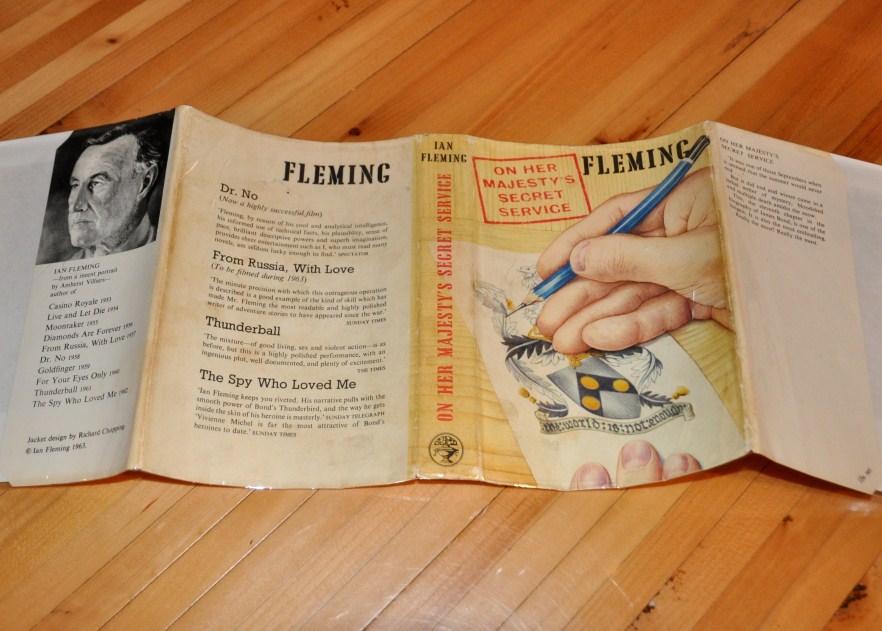
ON HER MAJESTY’S SECRET SERVICE (1963)
DISTINGUISHING FEATURES OF THE FIRST EDITION:
Publication Date: 1963
Publisher: Jonathan Cape, London
Print Run: 45,000 copies
The book: Black cloth with silver swish (reminiscent of the ski trail) to front and silver titles to spine. The copyright page should state: First published in 1963 with no other editions stated. White end papers. In addition to the regular print run, there were 250 signed limited signed editions published, several of which were unnumbered.
The jacket: Artist Richard Chopping. Matte jacket paper. Hand and pen to front. Front flap has a blurb about the book. Rear flap has a photo of the author and a listing of his previous Bond titles down to The Spy Who Love Me. Rear panel has five reviews. Price on jacket flap of 16s net.
POINTS OF COLLECTING INTEREST:
This book, like the other Fleming titles can tend to have dried cloth so the cloth may split, and the book titles and/or design can either fade or rub. Premiums are paid for books with unsplit cloth, and bright unfaded titles to the spine.
The On Her Majesty’s Secret Service dust jacket is once again light toned. As such, the dust jacket tends to turn brown, with the spine most affected (sunning), and the rear white panel often is found dingy. The strong red titles to the jacket spine are often found faded to more of a soft pink tone. Premiums are paid for overall bright jackets with bright spines without any darkening or sunning, and with strong red titles to the spine. In addition premiums paid for clean and bright rear panels.
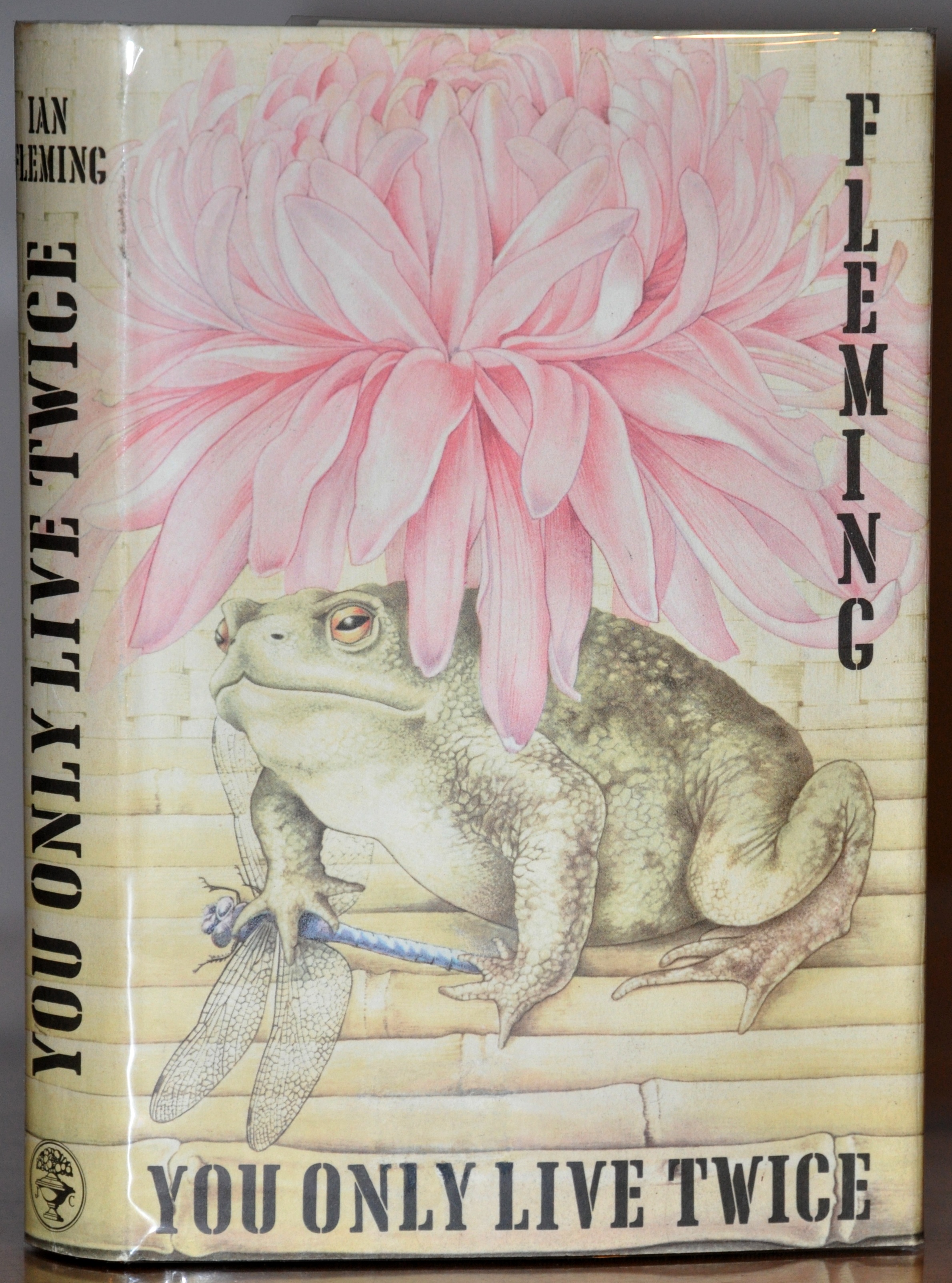

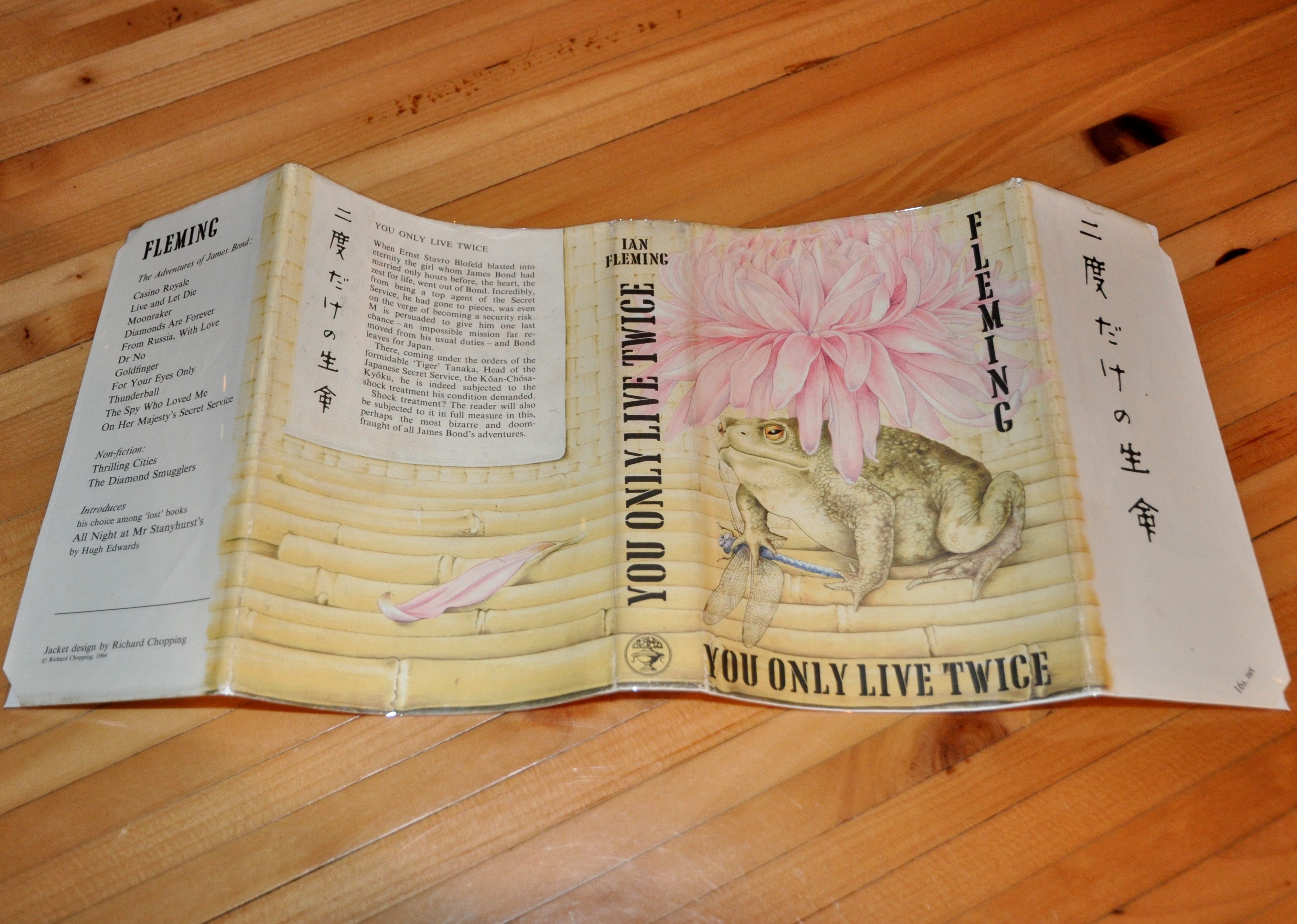
YOU ONLY LIVE TWICE (1964)
DISTINGUISHING FEATURES OF THE FIRST EDITION:
Publication Date: 1964
Publisher: Jonathan Cape, London
Print Run: 56,000 copies
The book: Produced in two states. Black cloth with Japanese lettering to front and silver titles to spine. The copyright page of the first state has the statement: First published in 1964 with no other editions stated. Second state of the first edition has the copyright statement of: First published March 1964. Bamboo patterned end papers.
The jacket: Artist Richard Chopping. Matte jacket paper. Wrap around artwork front and back of a Frog with a peony flower to front. Front flap has Japanese lettering. Rear flap has a listing of all the previous Bond titles, plus Thrilling Cities, The Diamond Smugglars, and All Night at Mr. Stanyhurst’s. Price on jacket flap of 16s net.
POINTS OF COLLECTING INTEREST:
The You Only Live Twice book had a large enough print run, and was published more recently so it is still possible to attain very nice condition books of this title at reasonable prices.
This book, like the other Ian Fleming titles can tend to have dried cloth so the cloth may split, and the book titles can either fade or rub. Premiums are paid for books with unsplit cloth, bright unfaded titles to the spine and front of the boards, sharp corners and no edgewear. The end papers tend to tone as well, with premiums paid for clean and bright end papers.
This light toned jacket tends to “sun” and turn brown, with the spine most affected. The pink flower petals can fade to a light pink or brown tone and fully disappear into the spine thus making them non distinguishable. Also the overall color tones of the flower on the front of the jacket which should be a medium bright pink can fade to a light faded pink. Premiums are paid for clear distinctions to the flower design on the spine, in addition to a flower that still maintains its original pink color tones to the front panel.
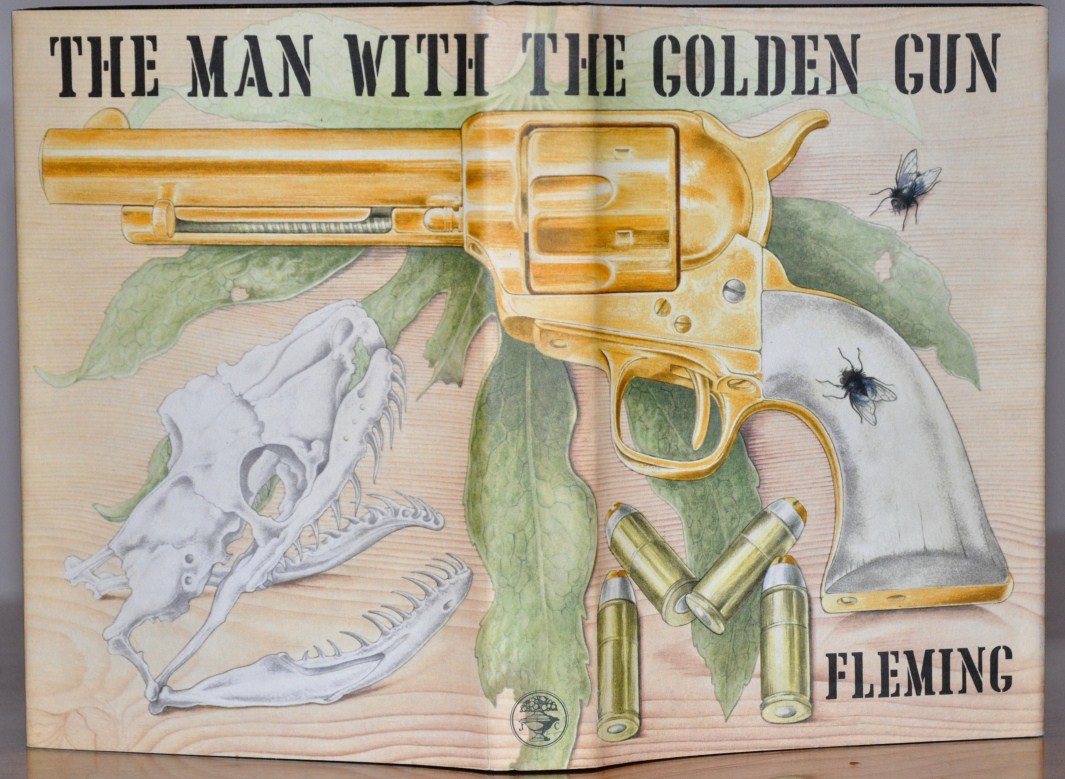
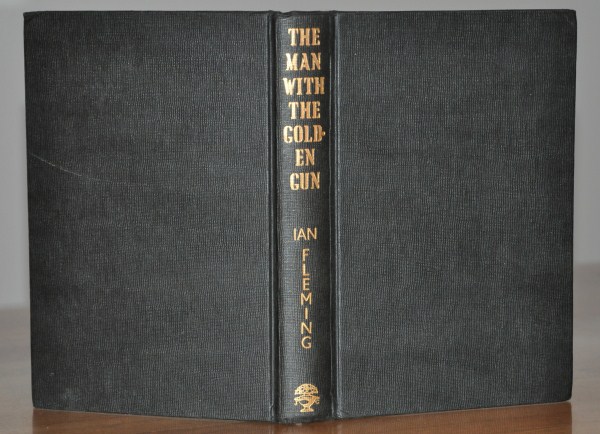
THE MAN WITH THE GOLDEN GUN (1965)
DISTINGUISHING FEATURES OF THE FIRST EDITION:
Publication Date: 1965
Publisher: Jonathan Cape, London
Print Run: 82,000 copies
The book: Technically this title was issued in two states. However the first state print run was extremely small (estimated at 150 copies), and consisted of an embossed golden gun to the front board. During production, errors with this design were discovered and the gun motif was removed for the balance of the print run. As such the books printed with the embossed gun are exceedingly scarce. For all practical purposes when one uses the term ‘first edition’ for this title, one refers to the first edition without the embossed golden gun. The copyright page should state: First published in 1965 with no other editions stated. Green marbled end papers, although there is a variation with white end papers presumably produced due to a shortage of the patterned green paper.
The jacket: Artist Richard Chopping. Matte jacket paper. Wrap around artwork of a gun and house flies, and bullets. Front flap has the title and The New James Bond. Rear flap lists all the previous titles in addition to Thrilling Cities, The Diamond Smugglers and Chitty Chitty Bang Bang. Price on jacket flap of 18s net.
POINTS OF COLLECTING INTEREST:
This book had a large enough print run and was published more recently so it is still possible to attain very nice condition books of this title at reasonable prices.
The spine titles on the Man With The Golden Gun can either fade or rub. Premiums are paid for books with unsplit cloth, and bright unfaded titles to the spine. The end papers can lose their brightness or the green tone can dull or fade, premiums are paid for bright end papers.
This brightly patterned light toned dust jacket tends to develop slight sunning/browning to the spine. Premiums are paid for overall bright jackets with no dulling to the green tones and no spine darkening.
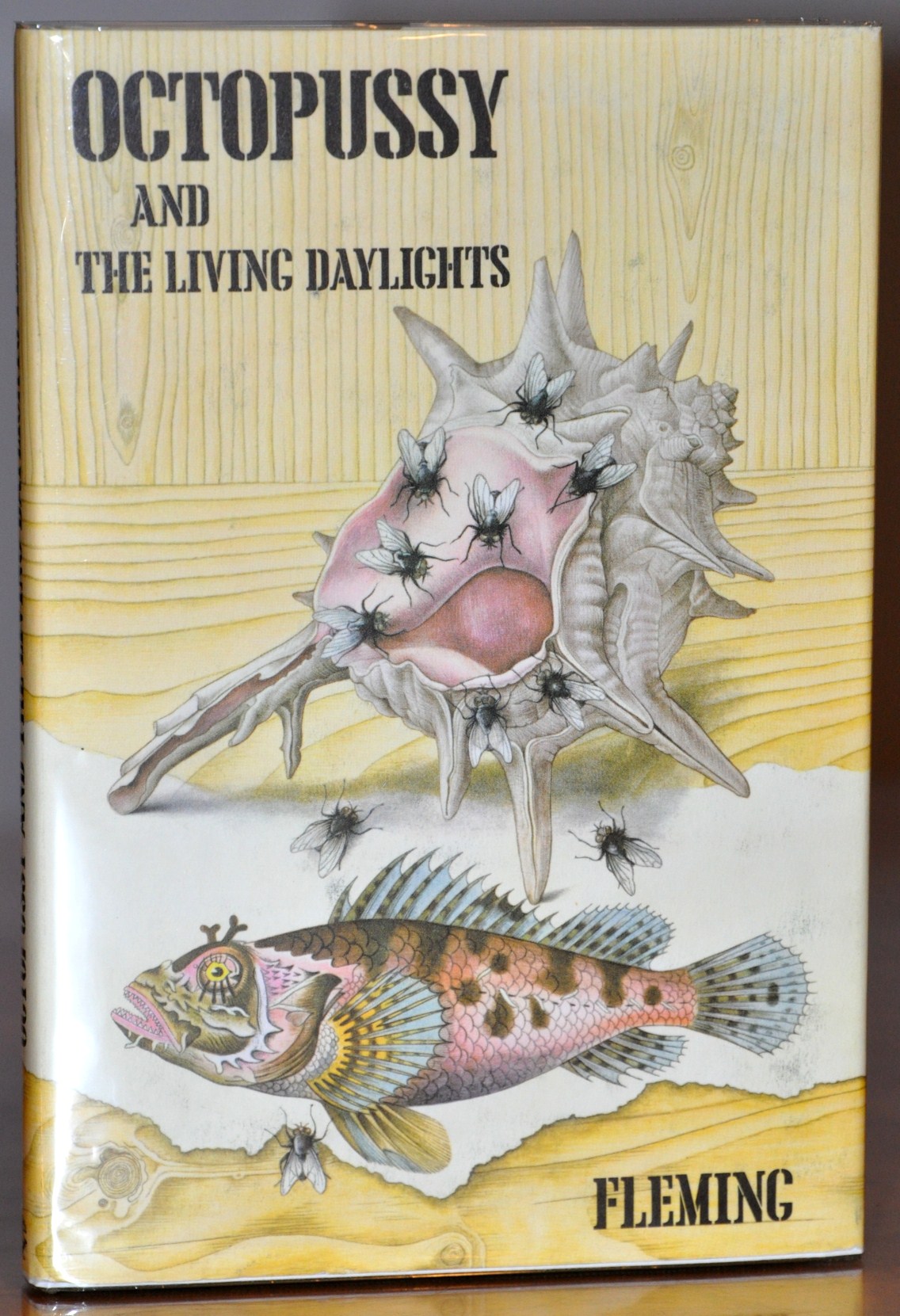
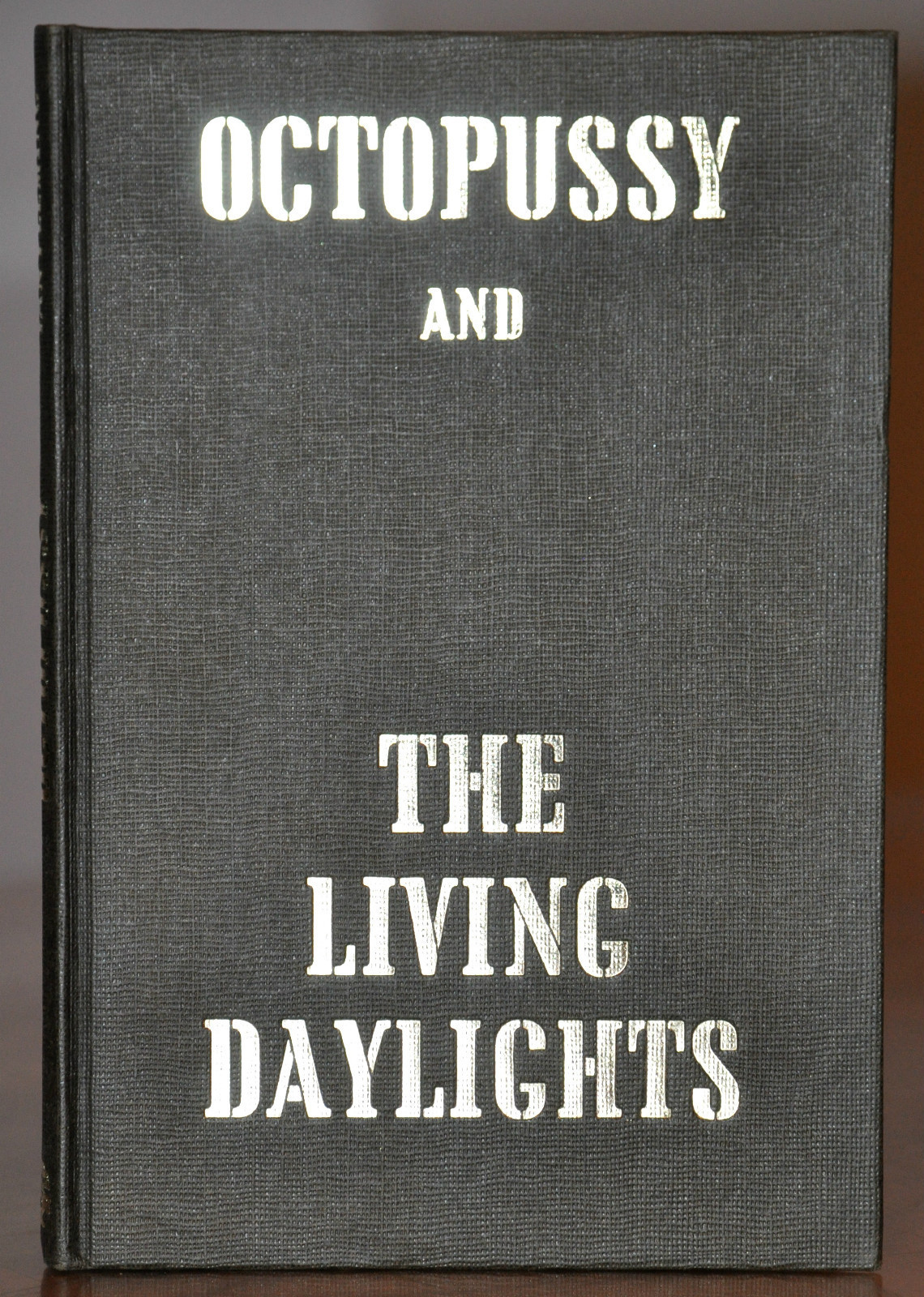
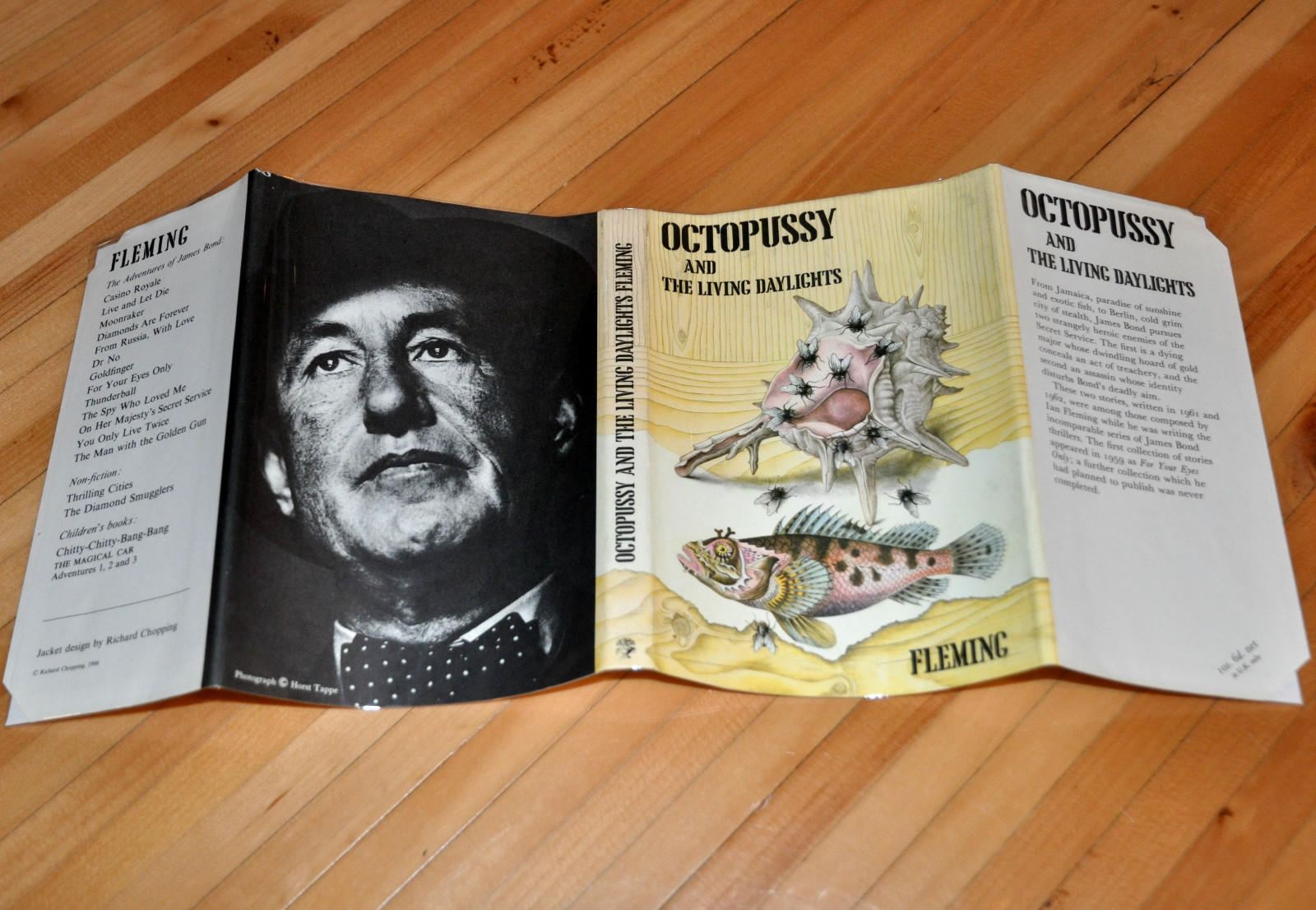
OCTOPUSSY AND THE LIVING DAYLIGHTS (1966)
DISTINGUISHING FEATURES OF THE FIRST EDITION:
Publication Date: 1966
Publisher: Jonathan Cape, London
Print Run: 50,000 copies
The book: This book is the thinnest book in the James Bond / Ian Fleming series. Black cloth with gilt titles to front and spine. Marbled toned end papers. The copyright page should state: First published in 1966 with no other editions stated. There will also be a reference to the Literary Executors of Ian Fleming deceased on the copyright page as this was the last James Bond novel Ian Fleming wrote, and it was published after his death.
The jacket: Artist Richard Chopping. Matte jacket paper. Conch shell, flies and a fish to front. Front flap has the book title and a blurb. Rear flap is blank. Rear flap lists all the previous titles in addition to Thrilling Cities, The Diamond Smugglers and Chitty Chitty Bang Bang. Back panel has a photograph of the author. Price on jacket flap of 10s 6d net (with second state wrappers having the adjusted price sticker).
POINTS OF COLLECTING INTEREST:
This book, like the other Fleming titles can tend to have dried cloth so the cloth may split, and the book titles and/or design can either fade or rub. Premiums are paid for books with unsplit cloth, and bright unfaded titles to the spine and front.
This is the most recent Ian Fleming / James Bond title, and as such near fine examples are still available at reasonable prices. The light toned dust jacket can have a tendency to lightly ‘sun’ with the spine most affected, which can either fade or turn slightly browned. In addition the strong beige wood patterns can fade. Premiums are paid for overall bright jackets with bright spines without any darkening or sunning. The dust jacket was originally issued with a price of 10s 6d net. Dust jackets which show this price set by the publisher on the flap are considered to be the first state of the dust jacket. The price was quickly altered with the placement of a price sticker of 16s net over the ‘original published’ dust jacket printed price. Premiums are paid for dust jackets without the price sticker revision.
